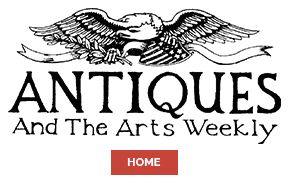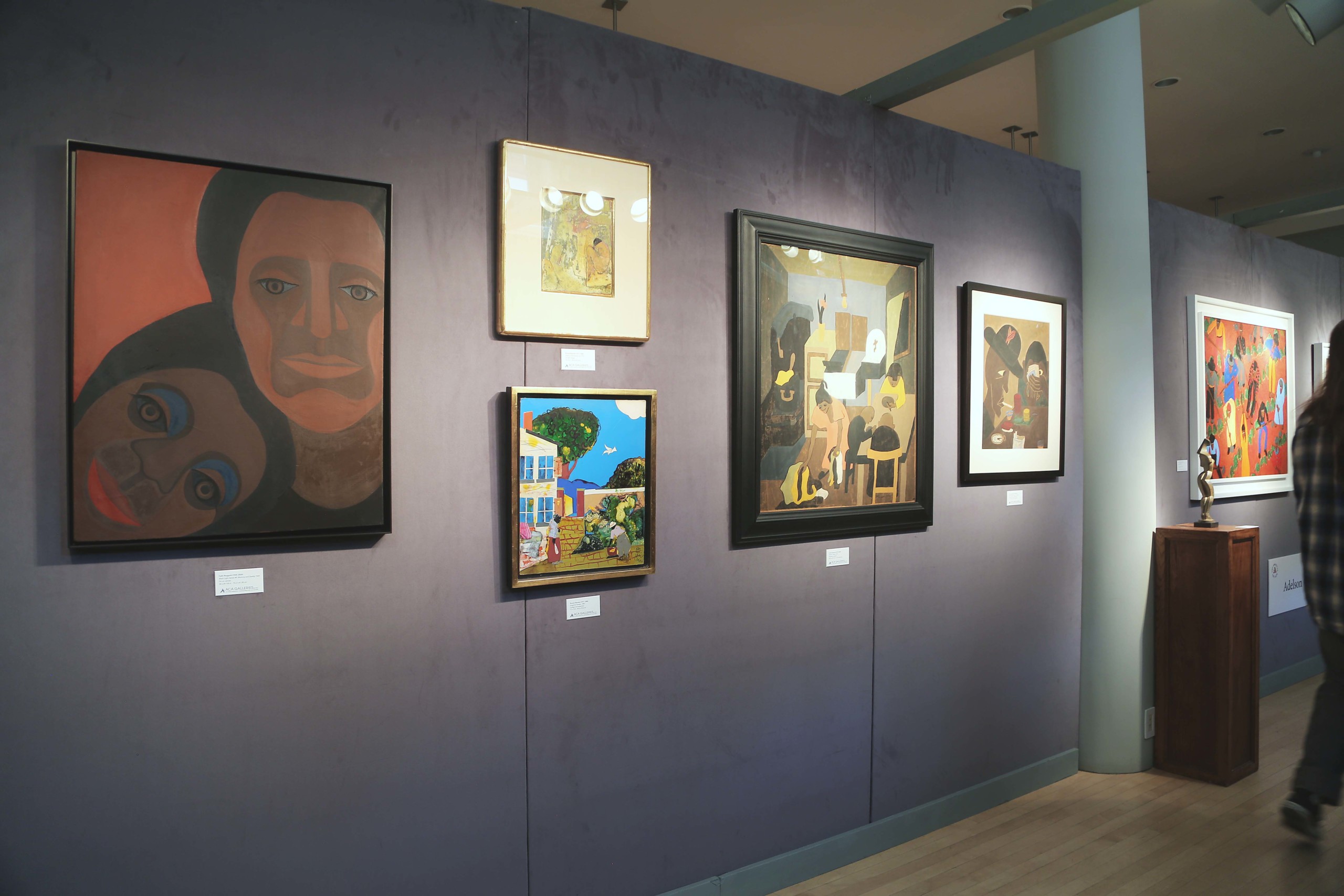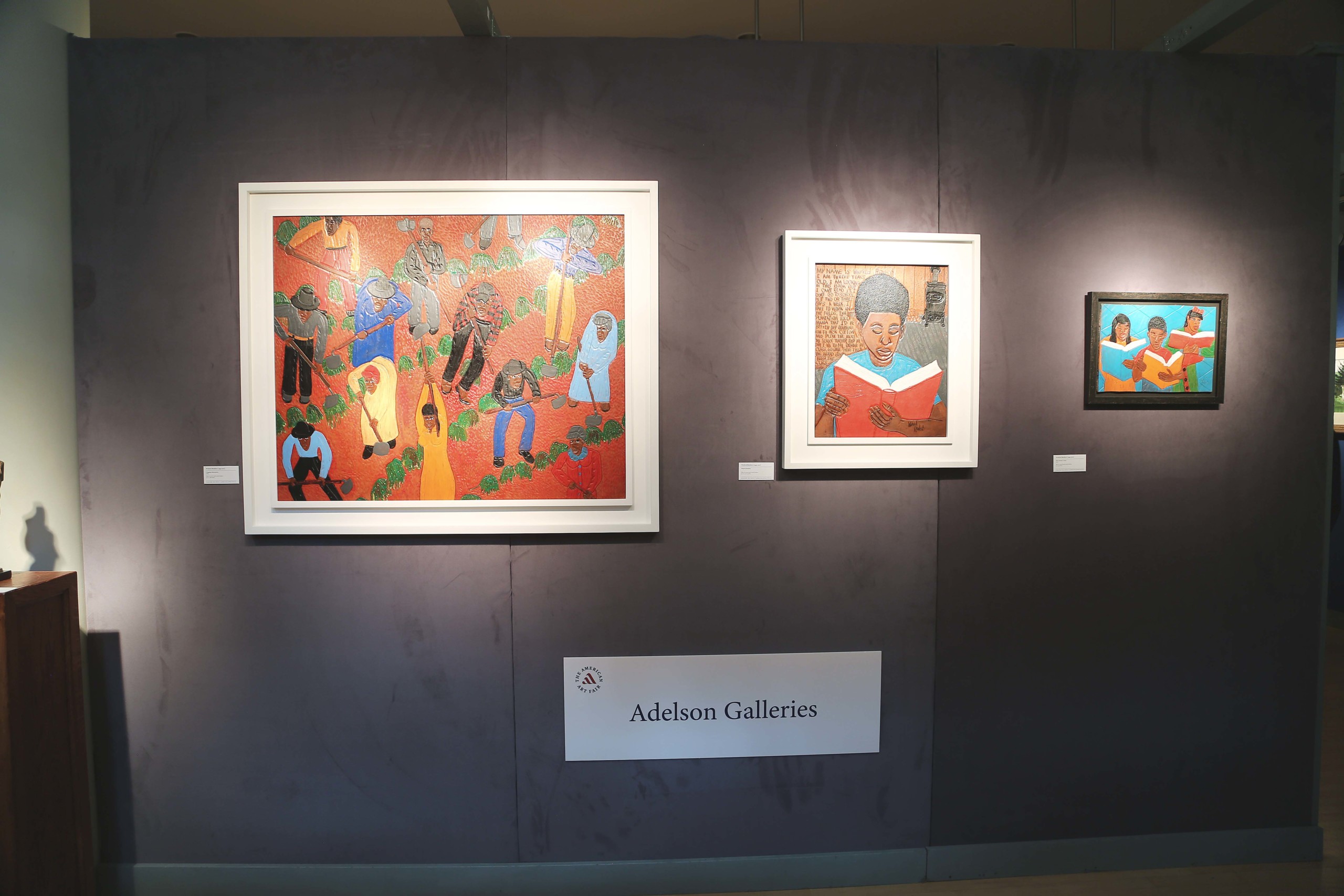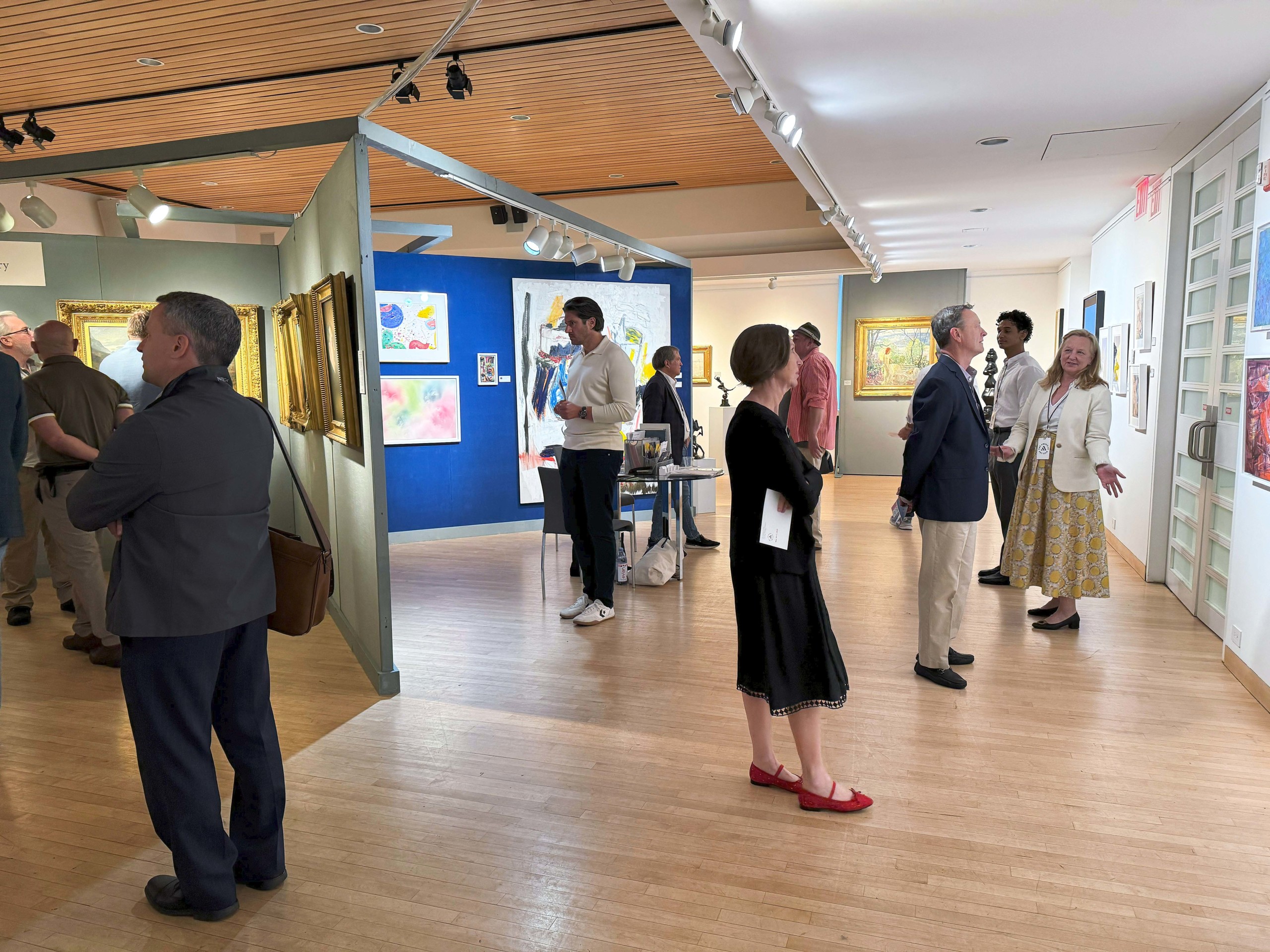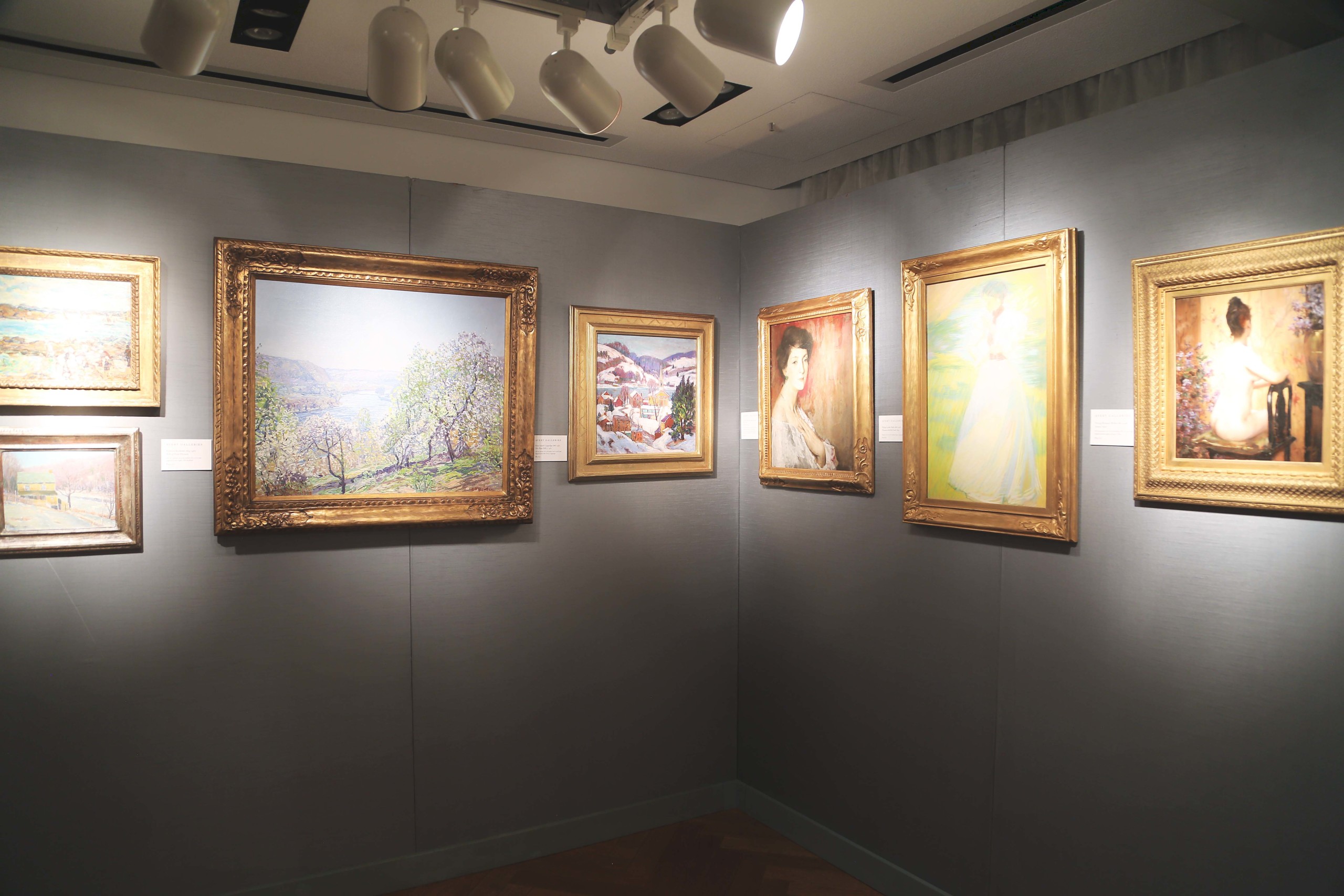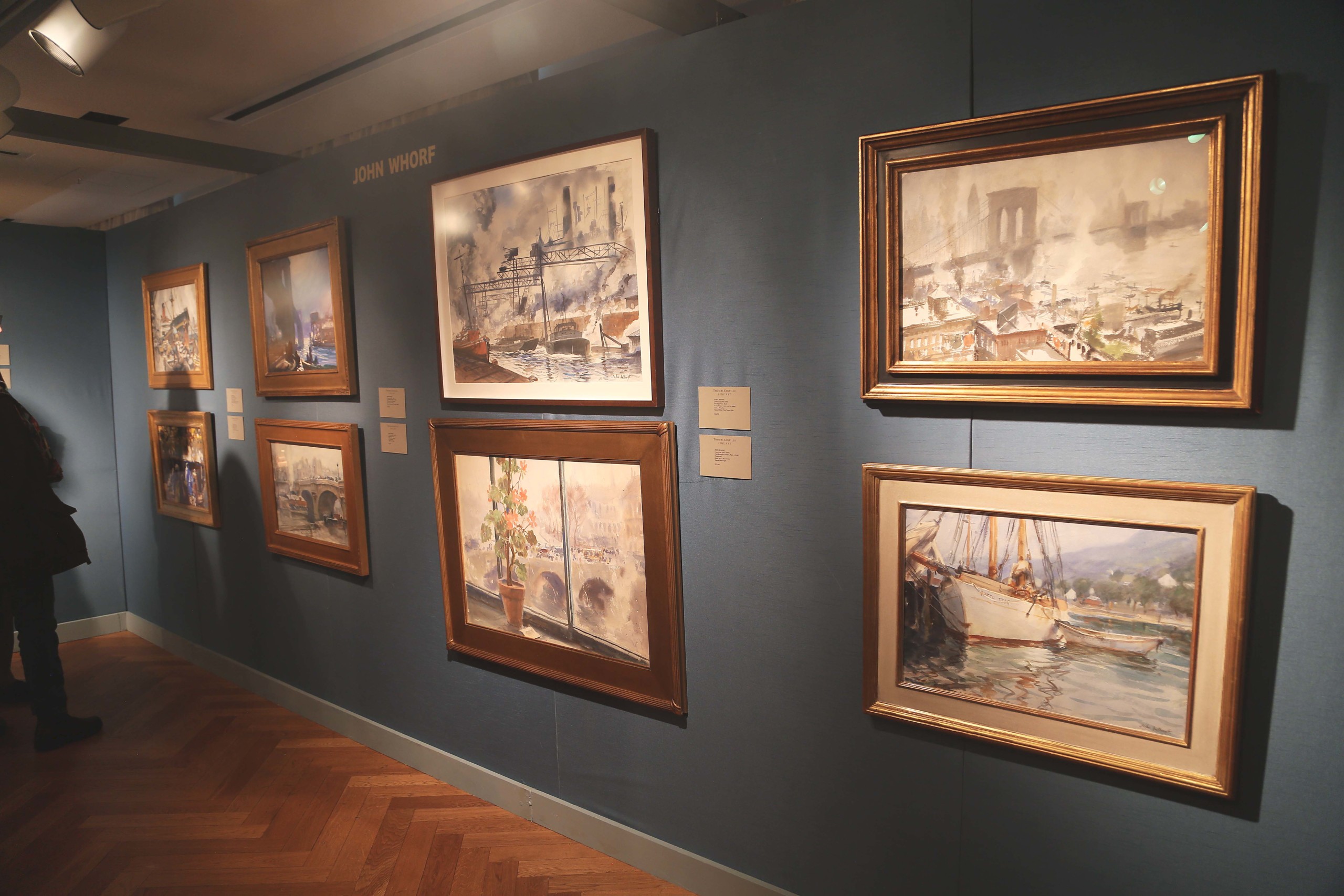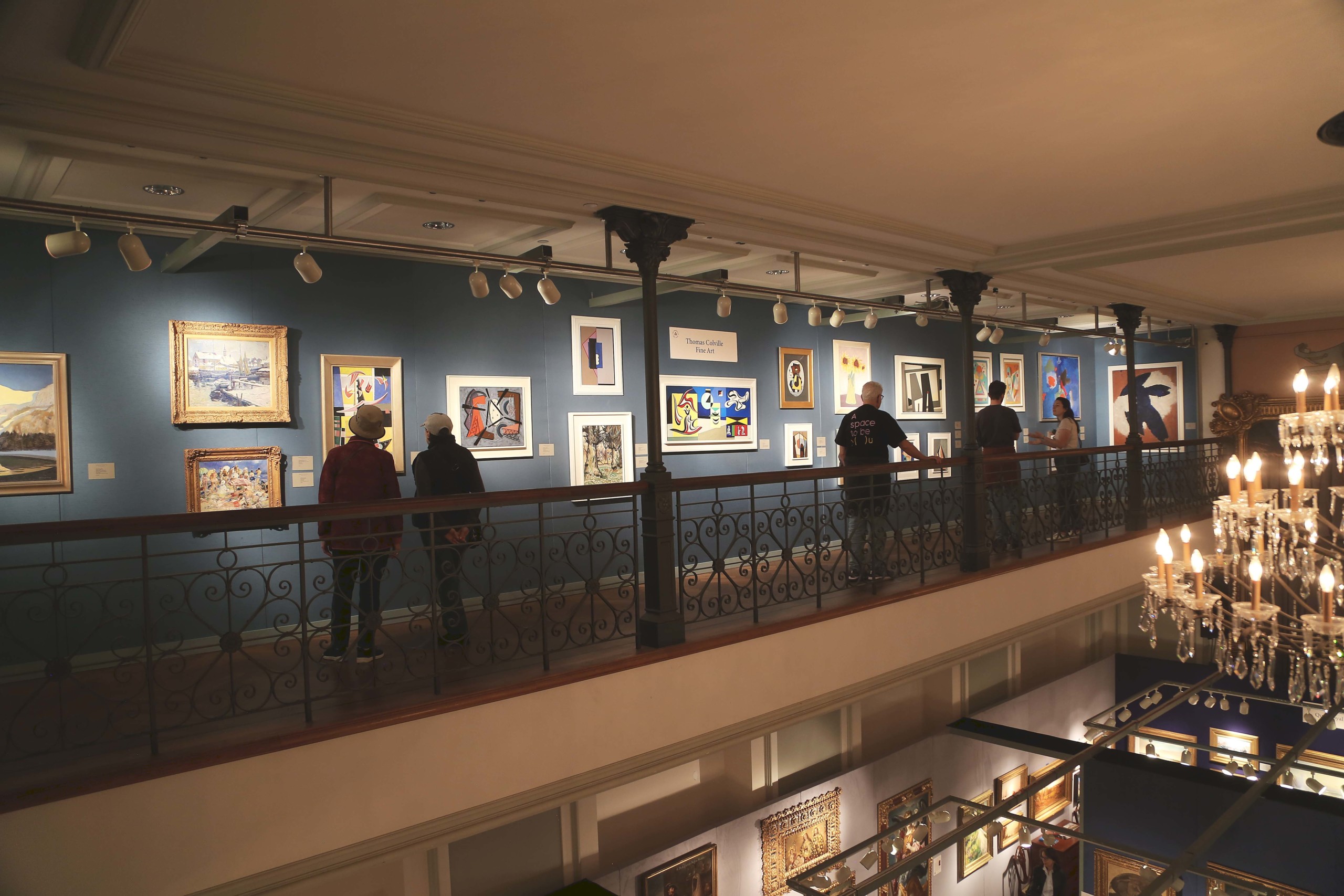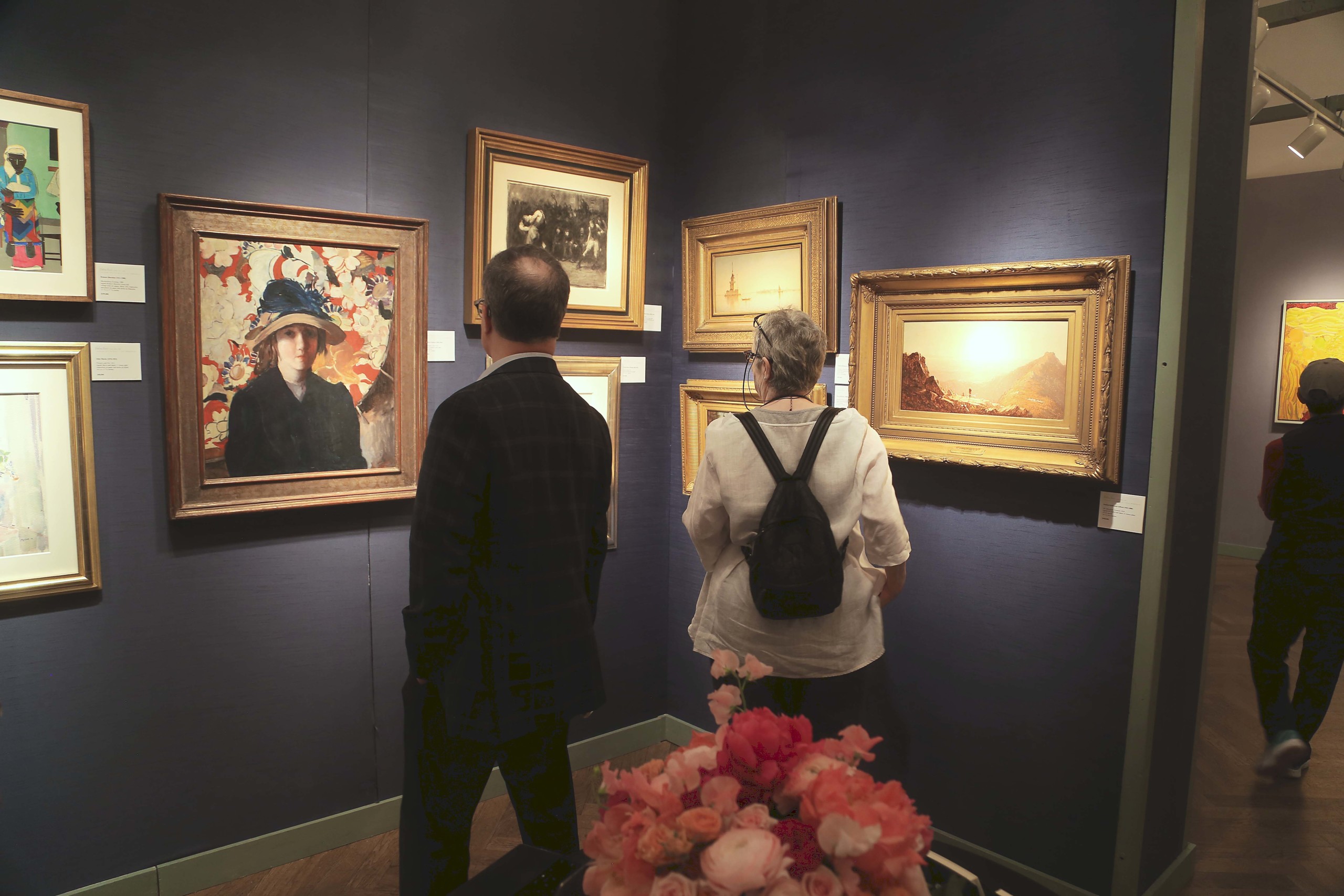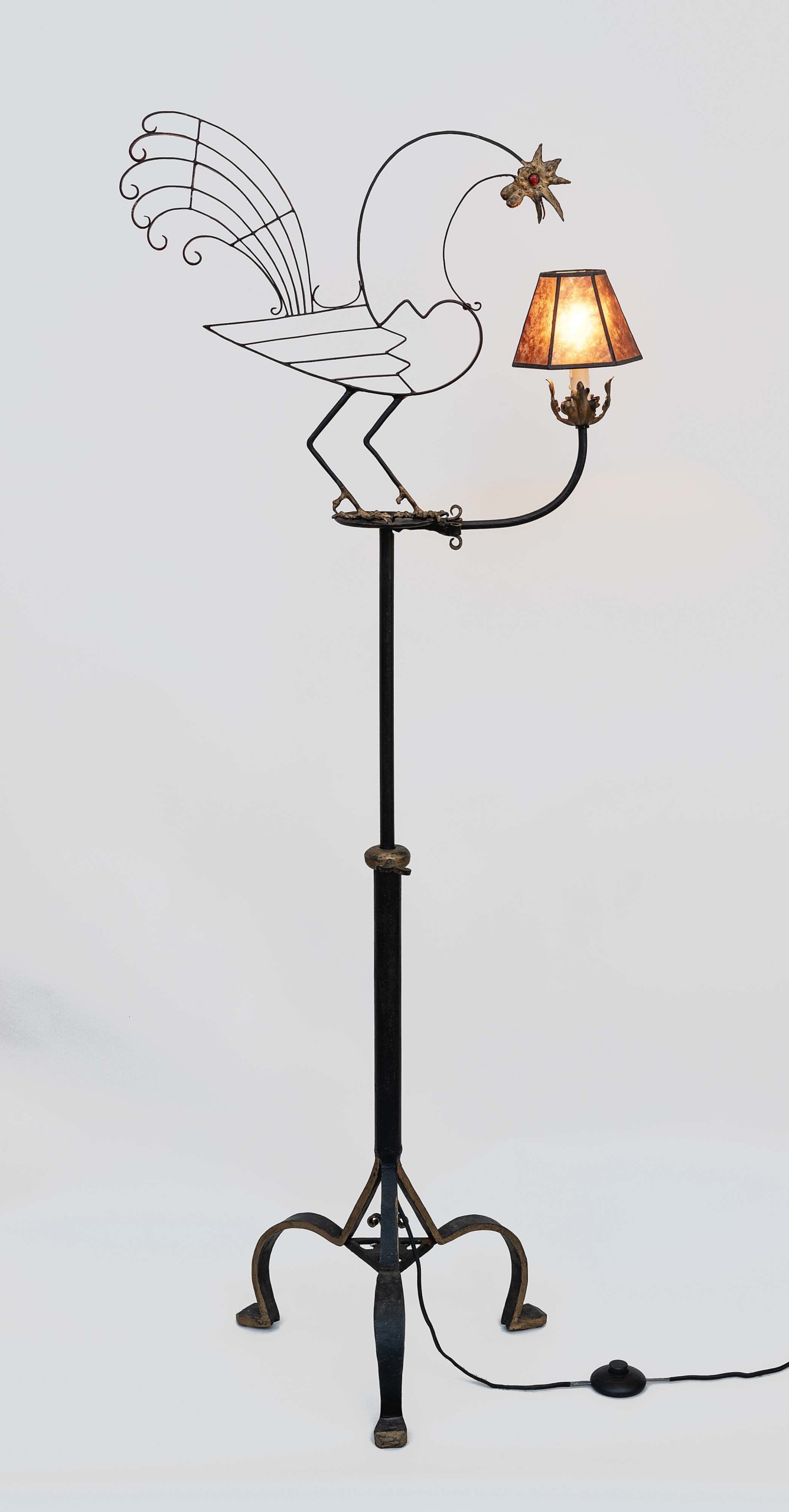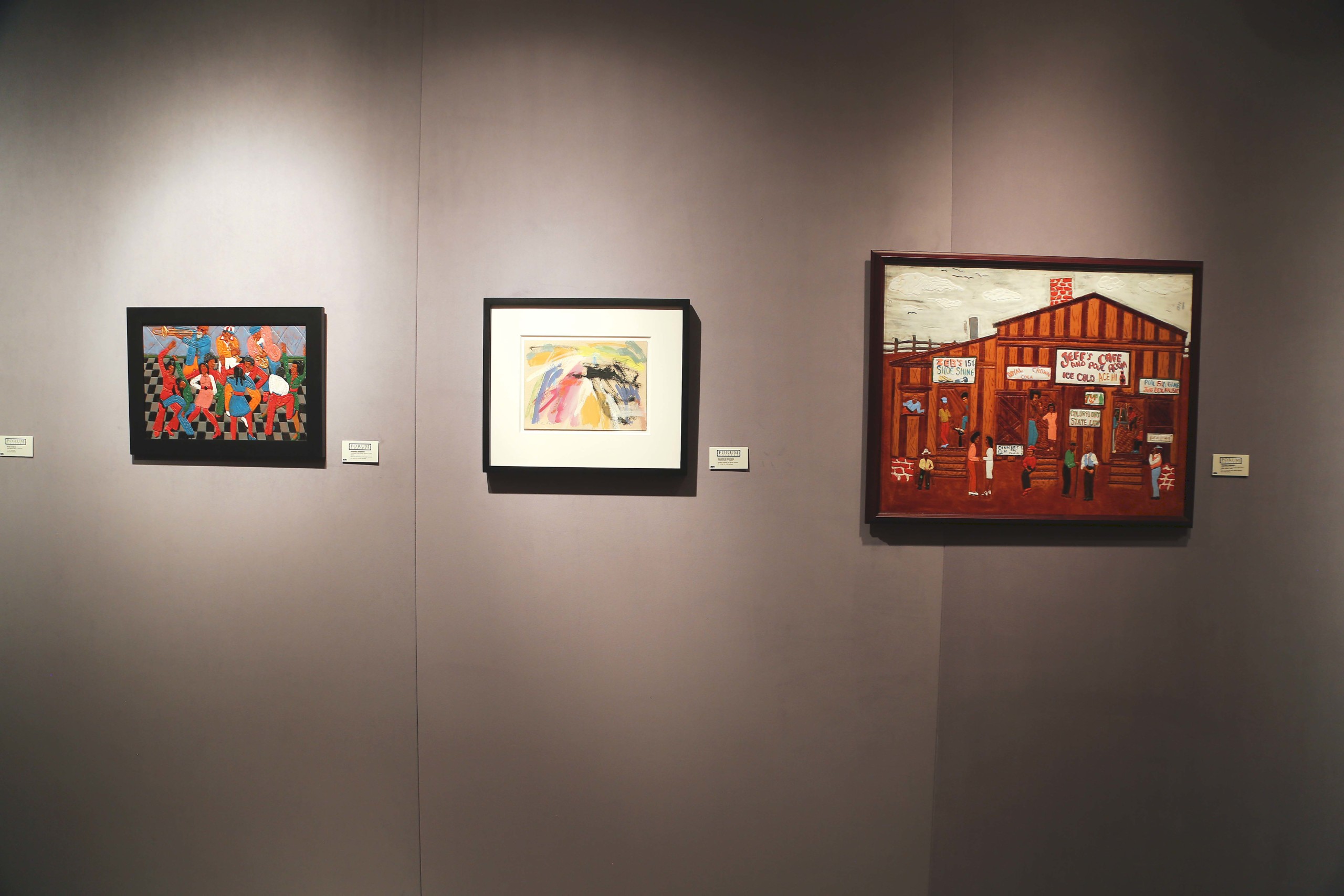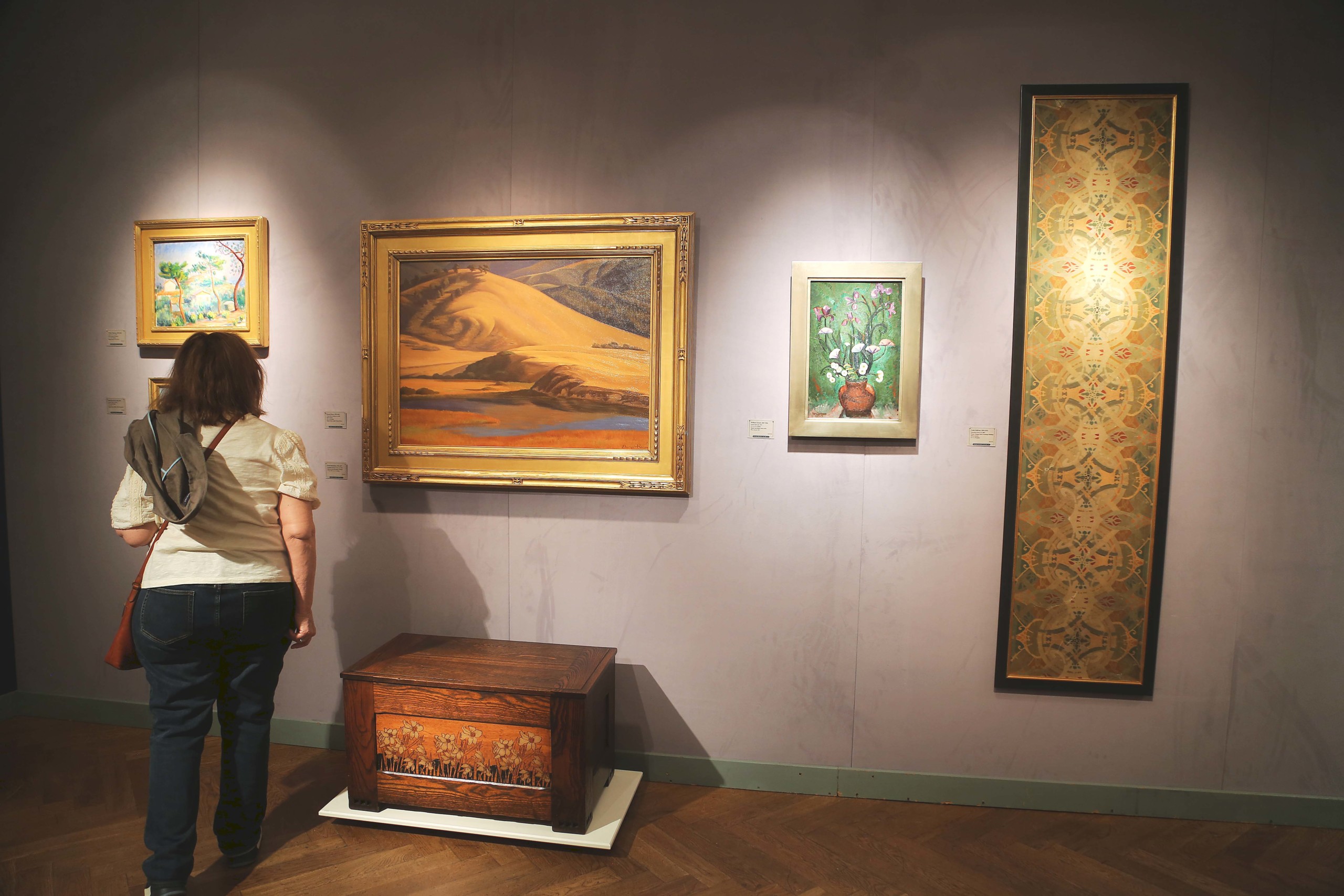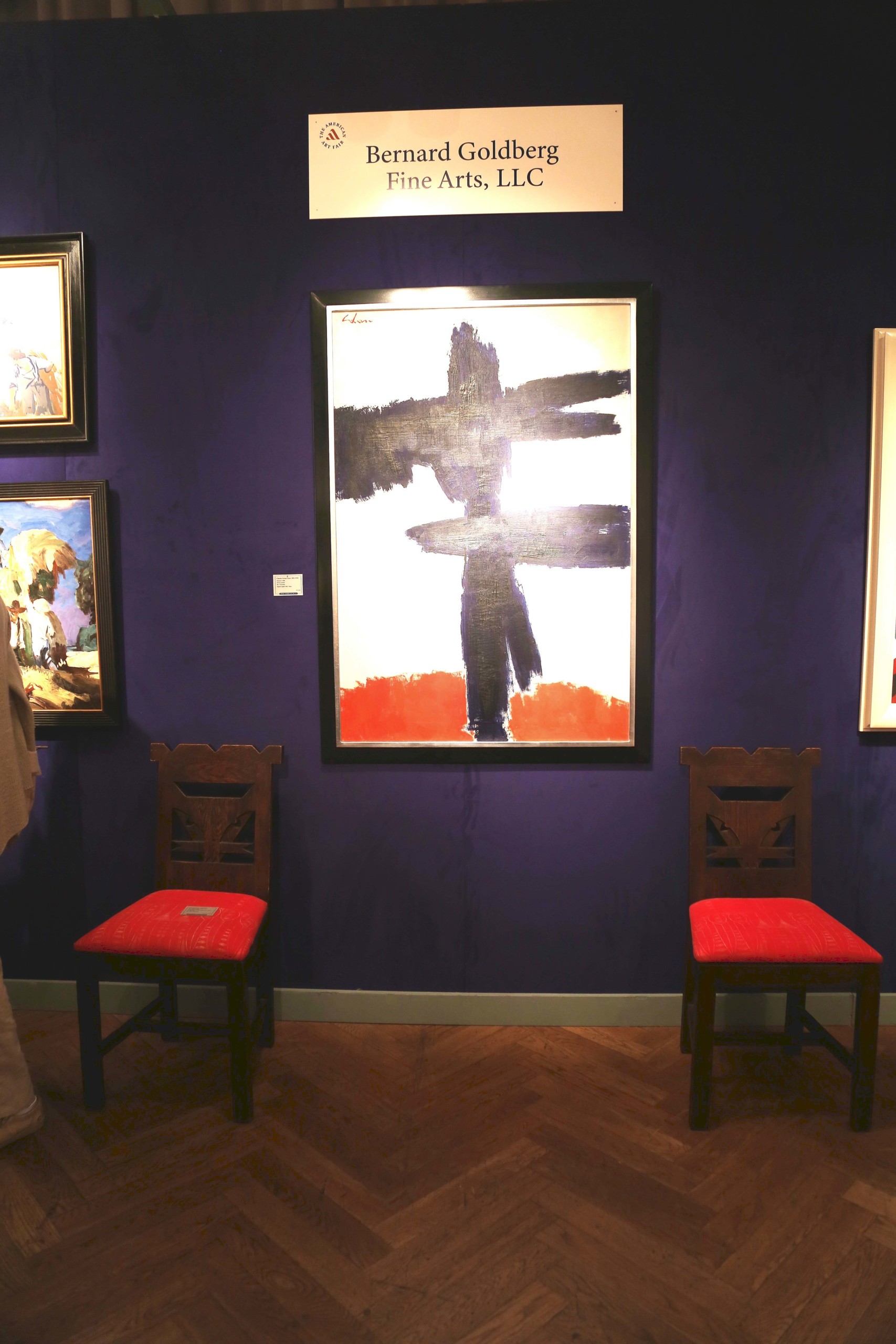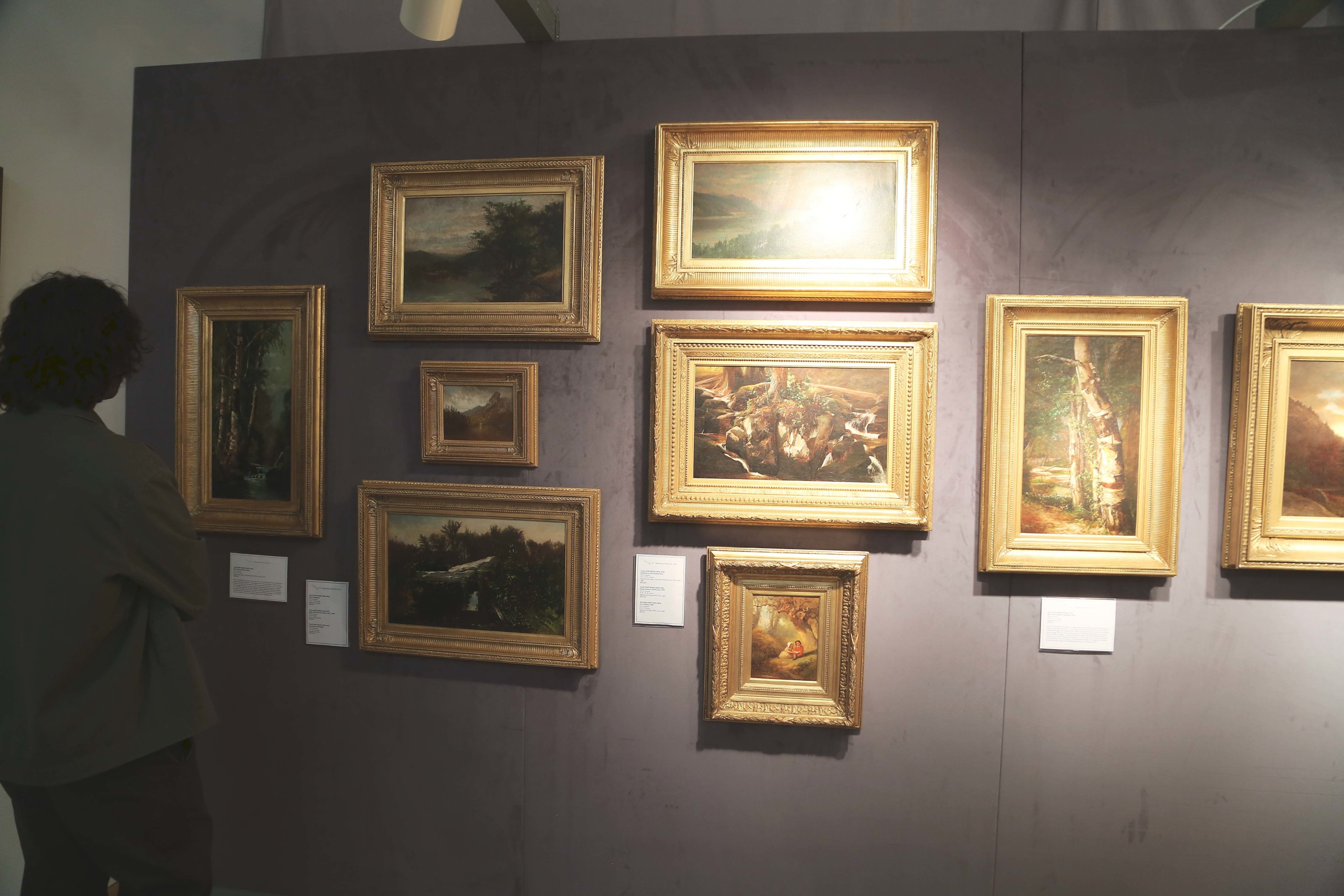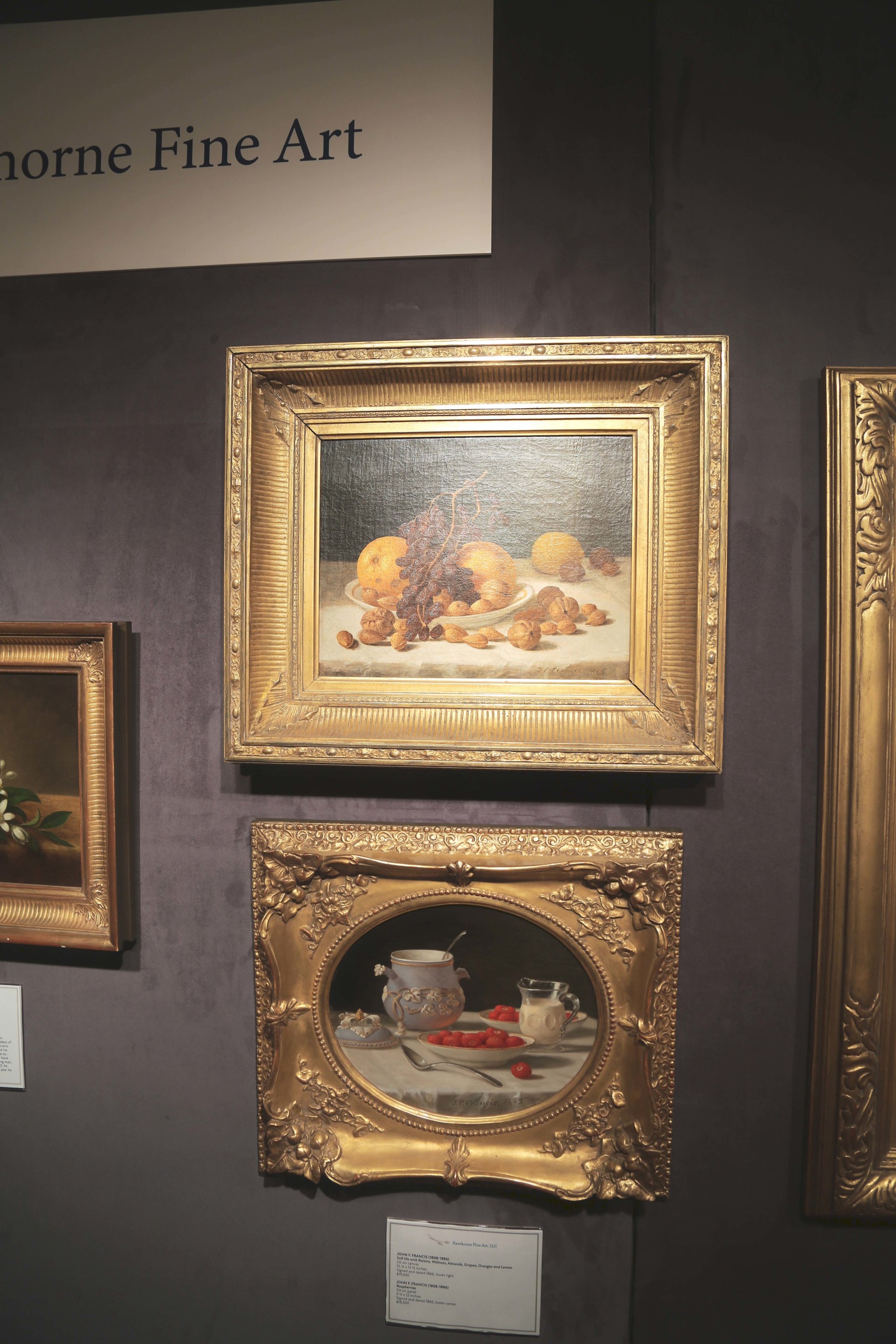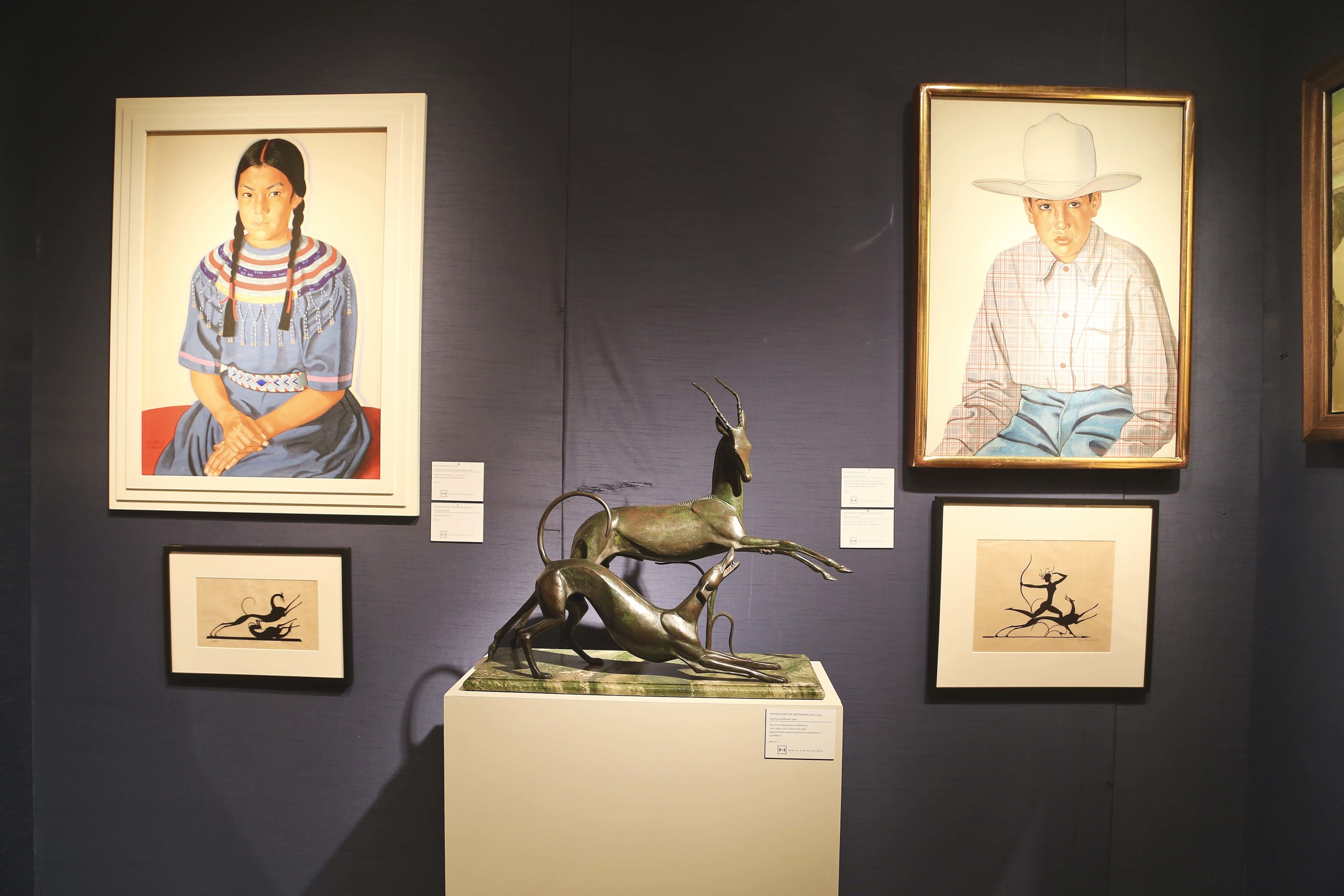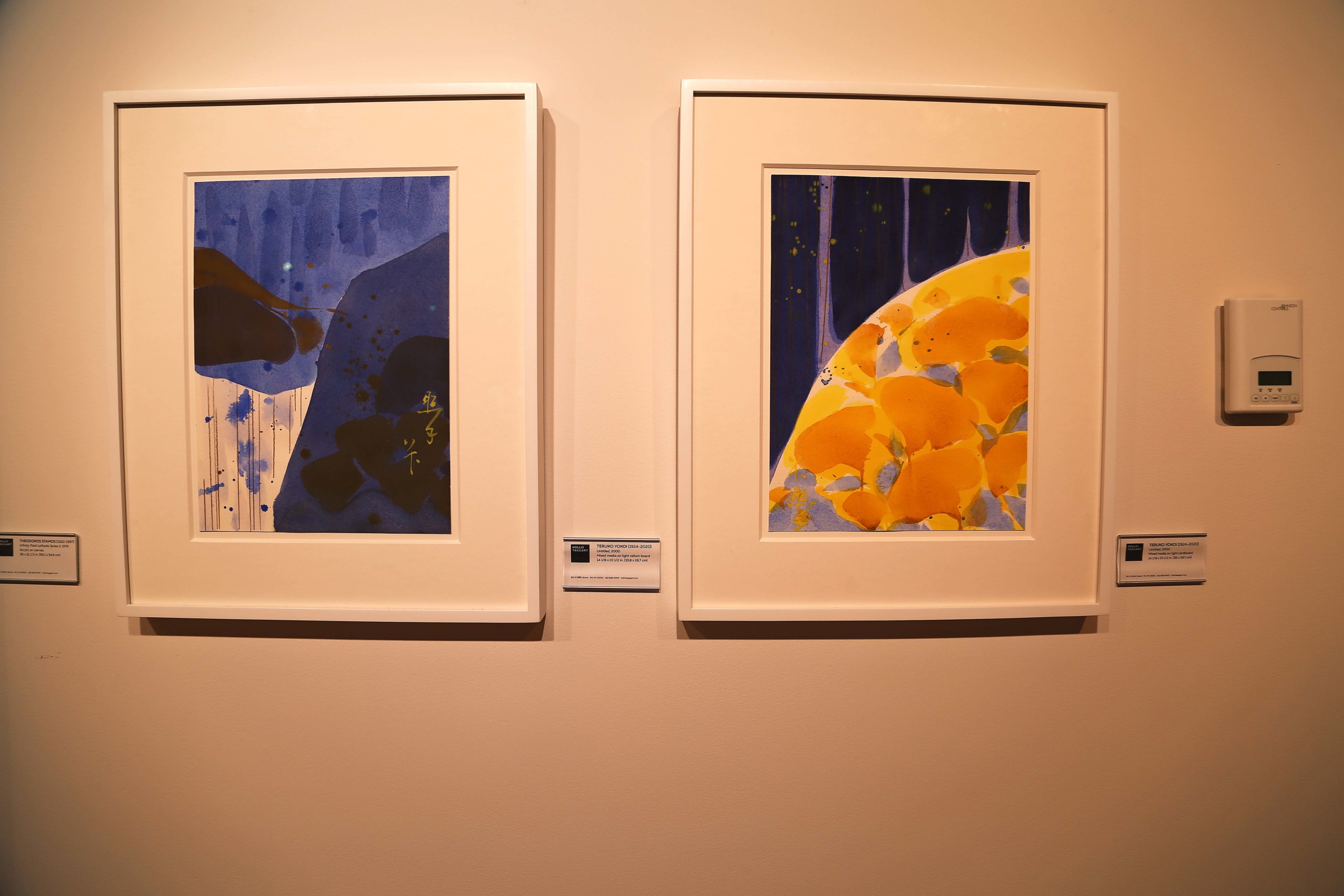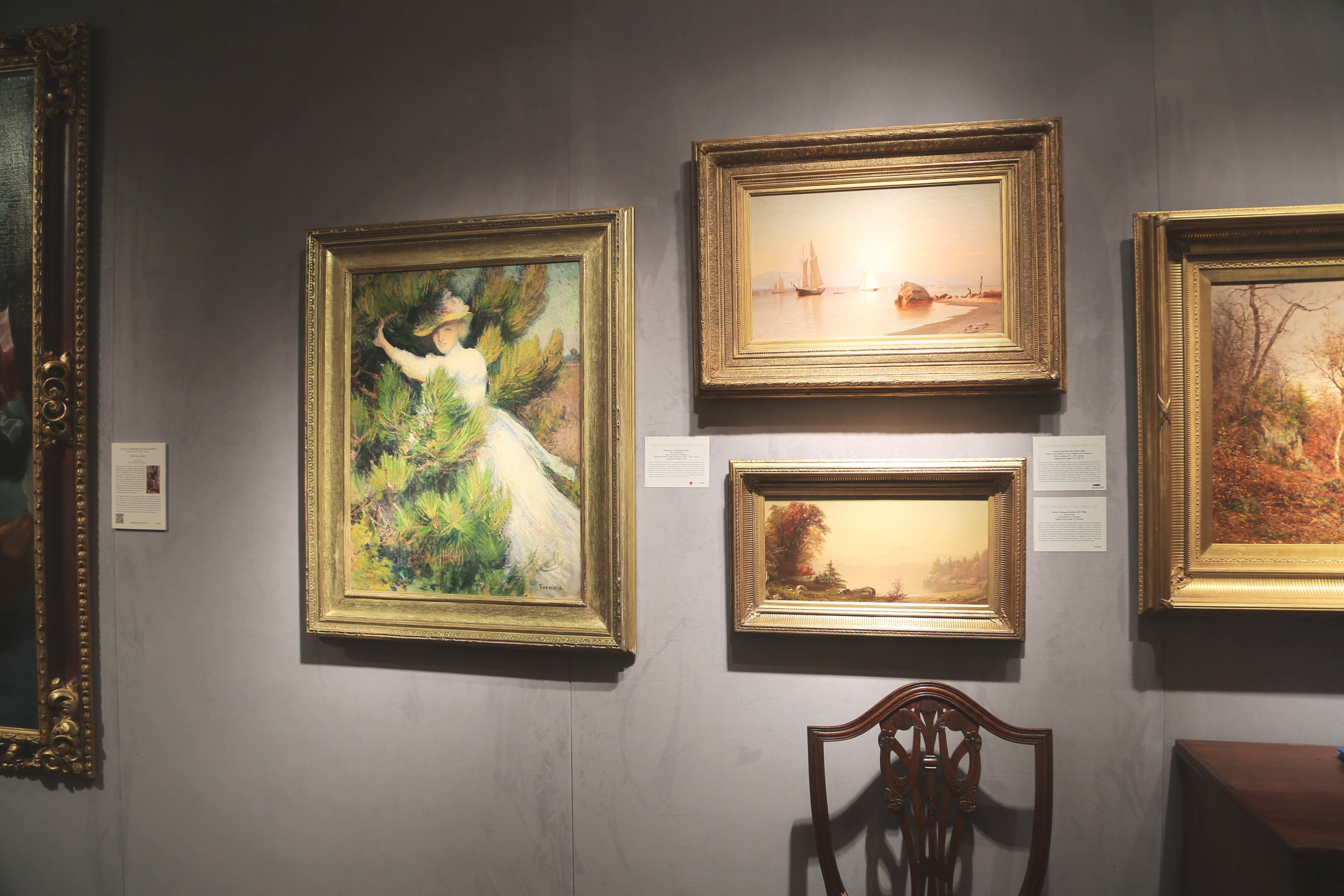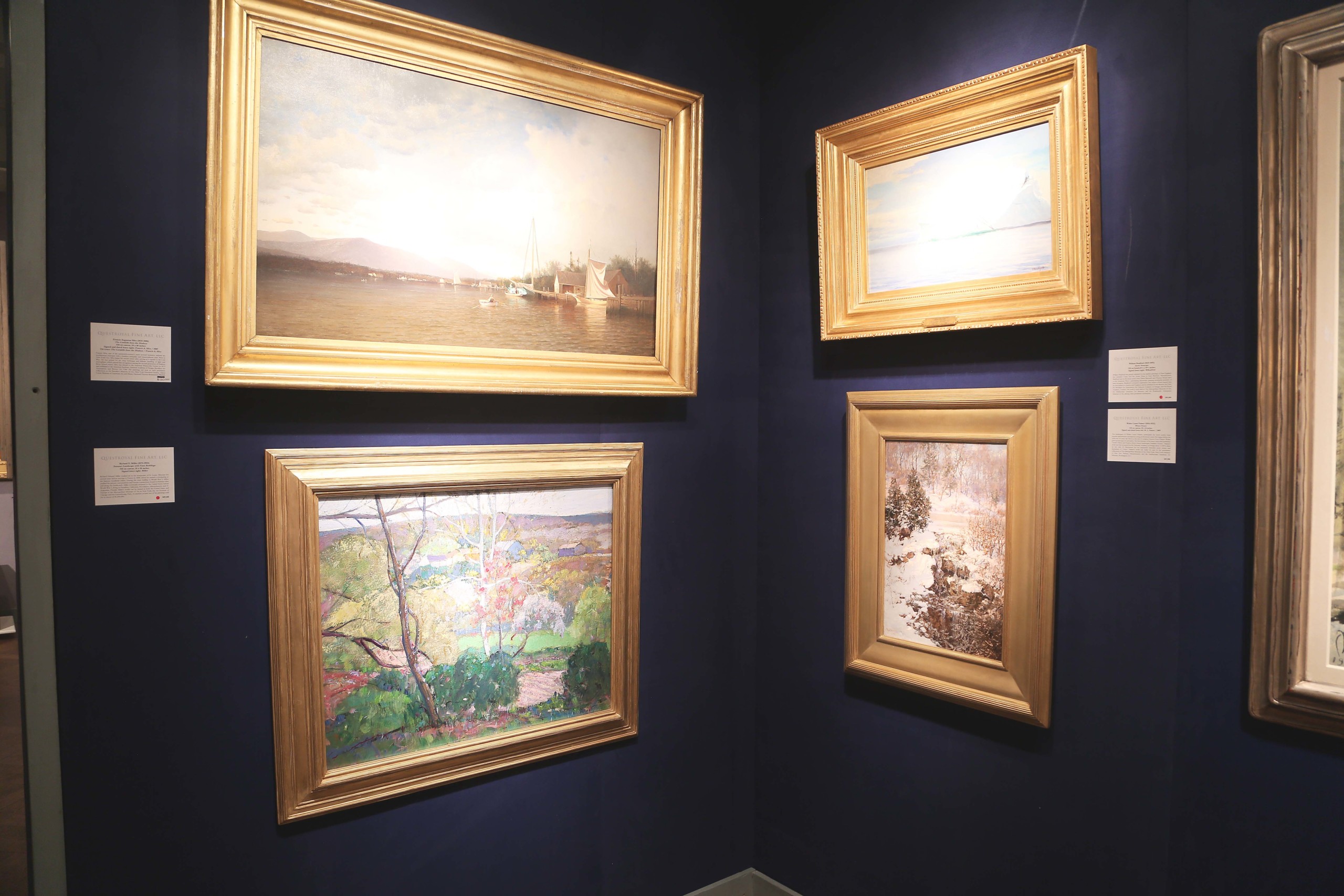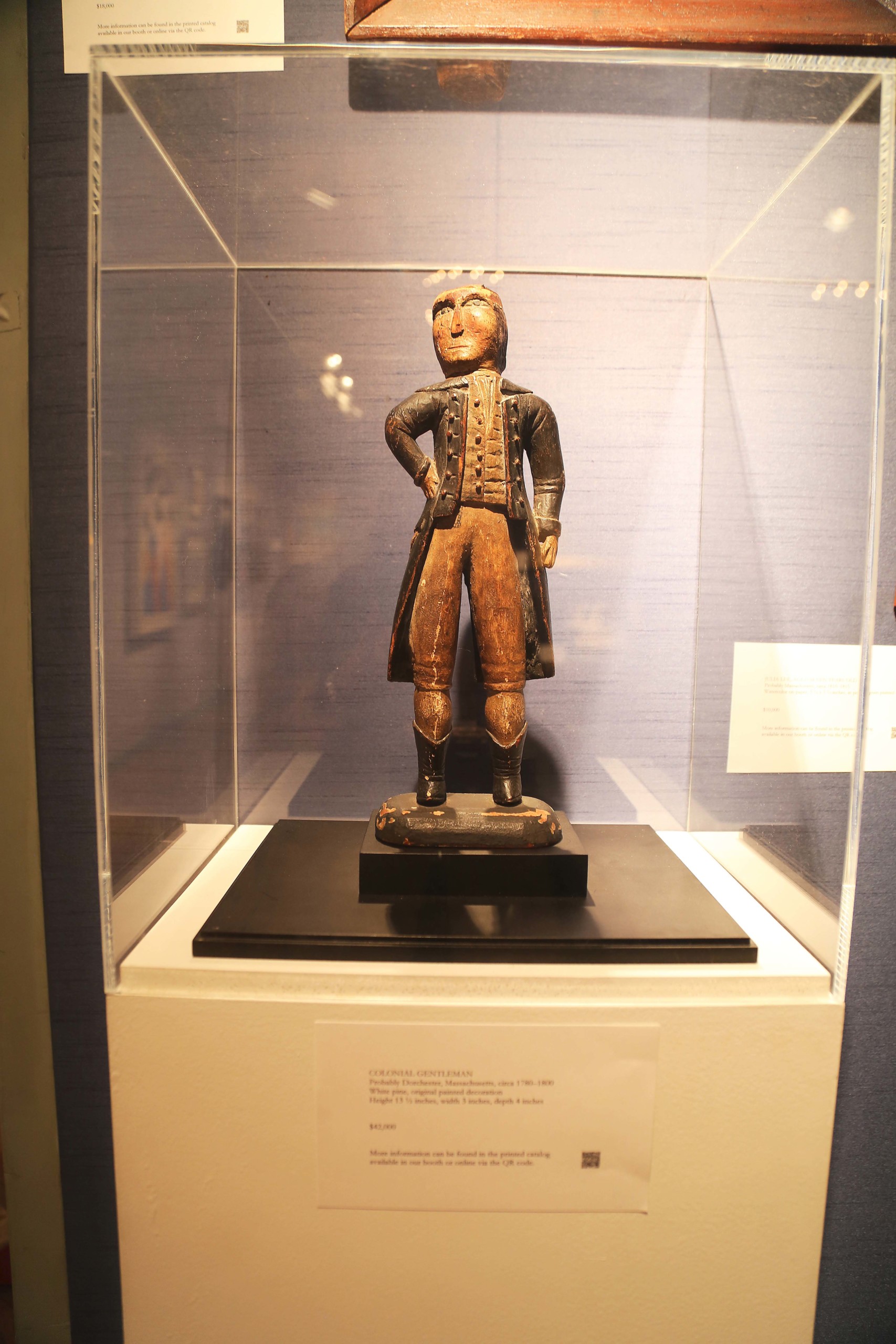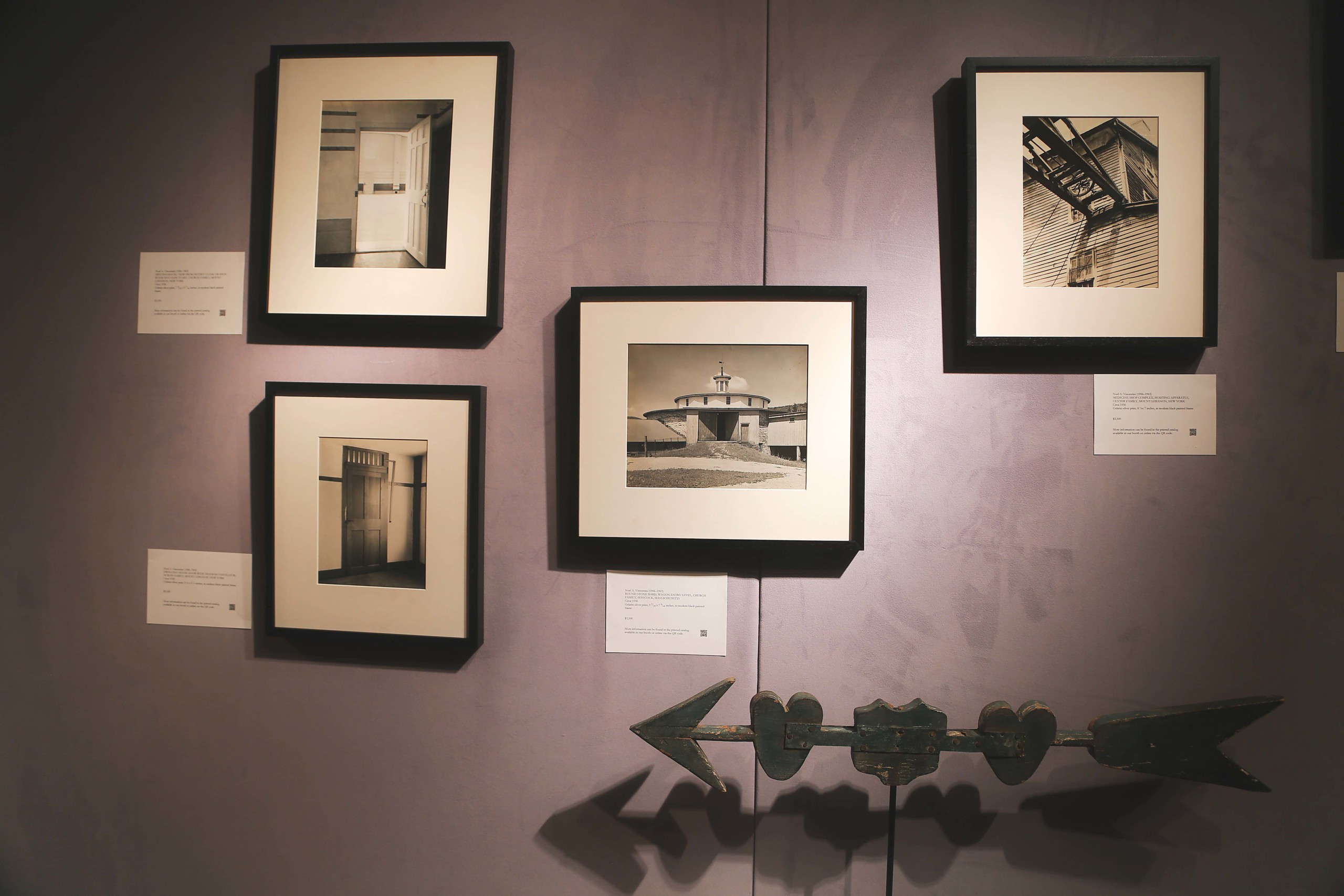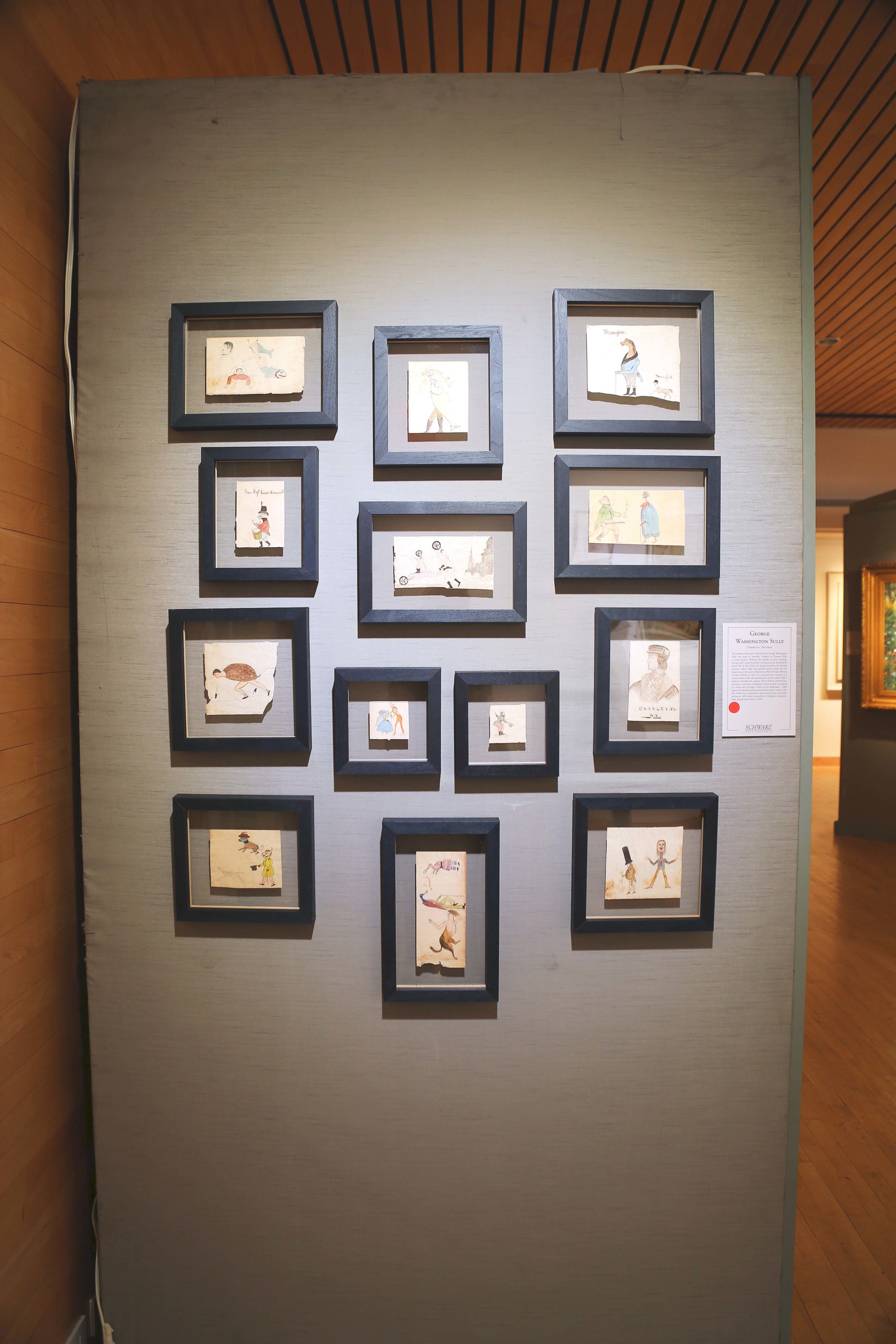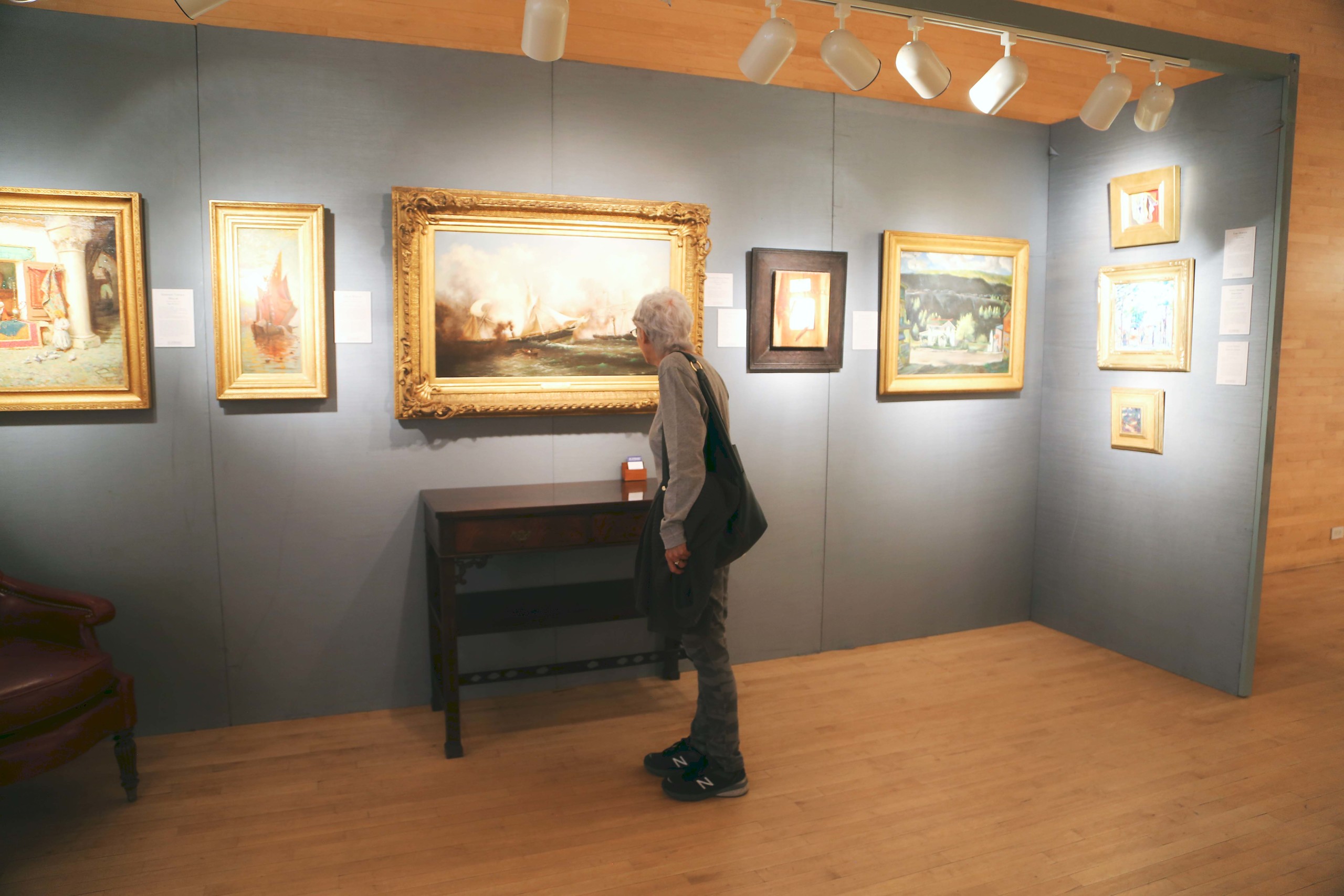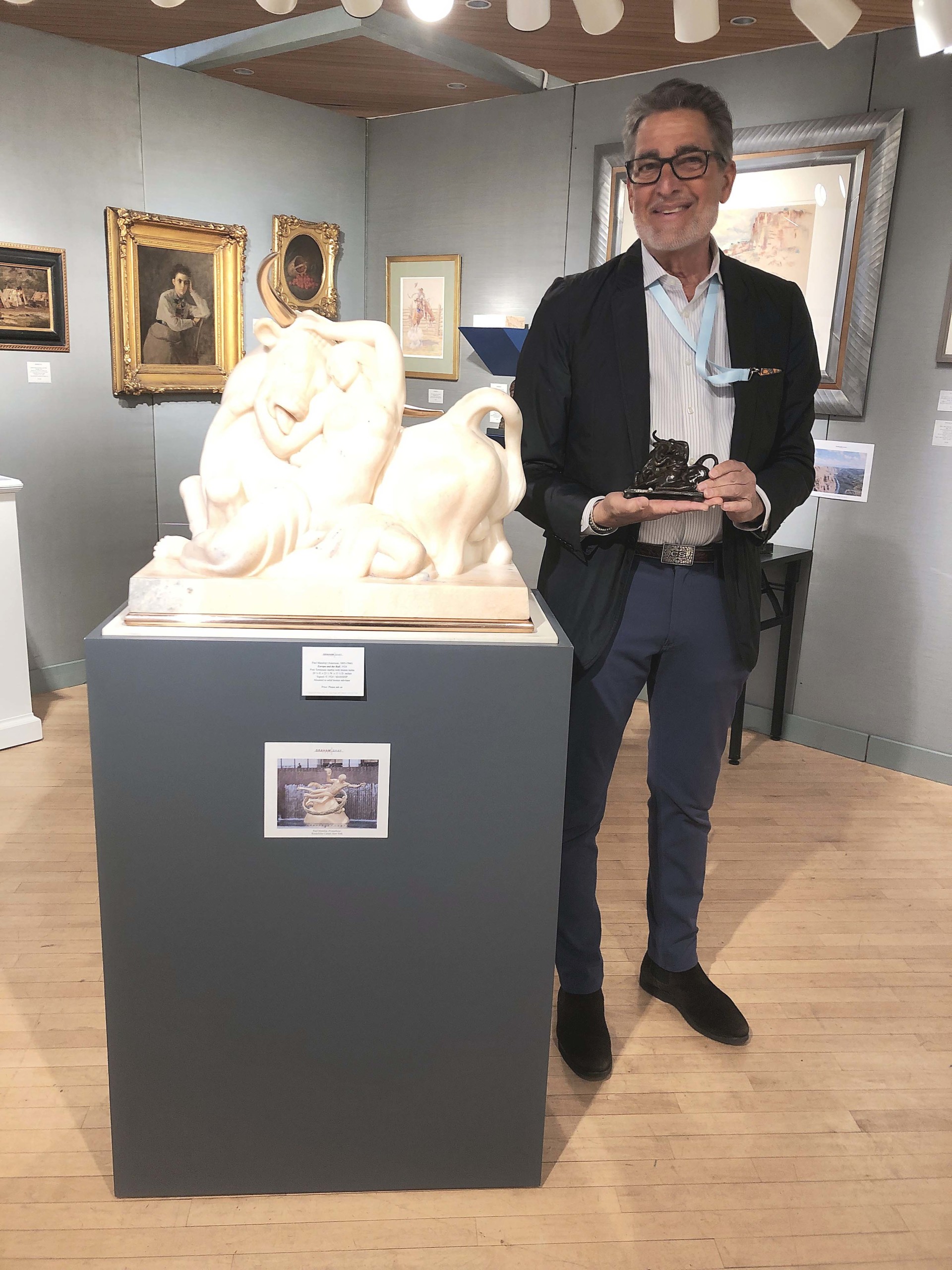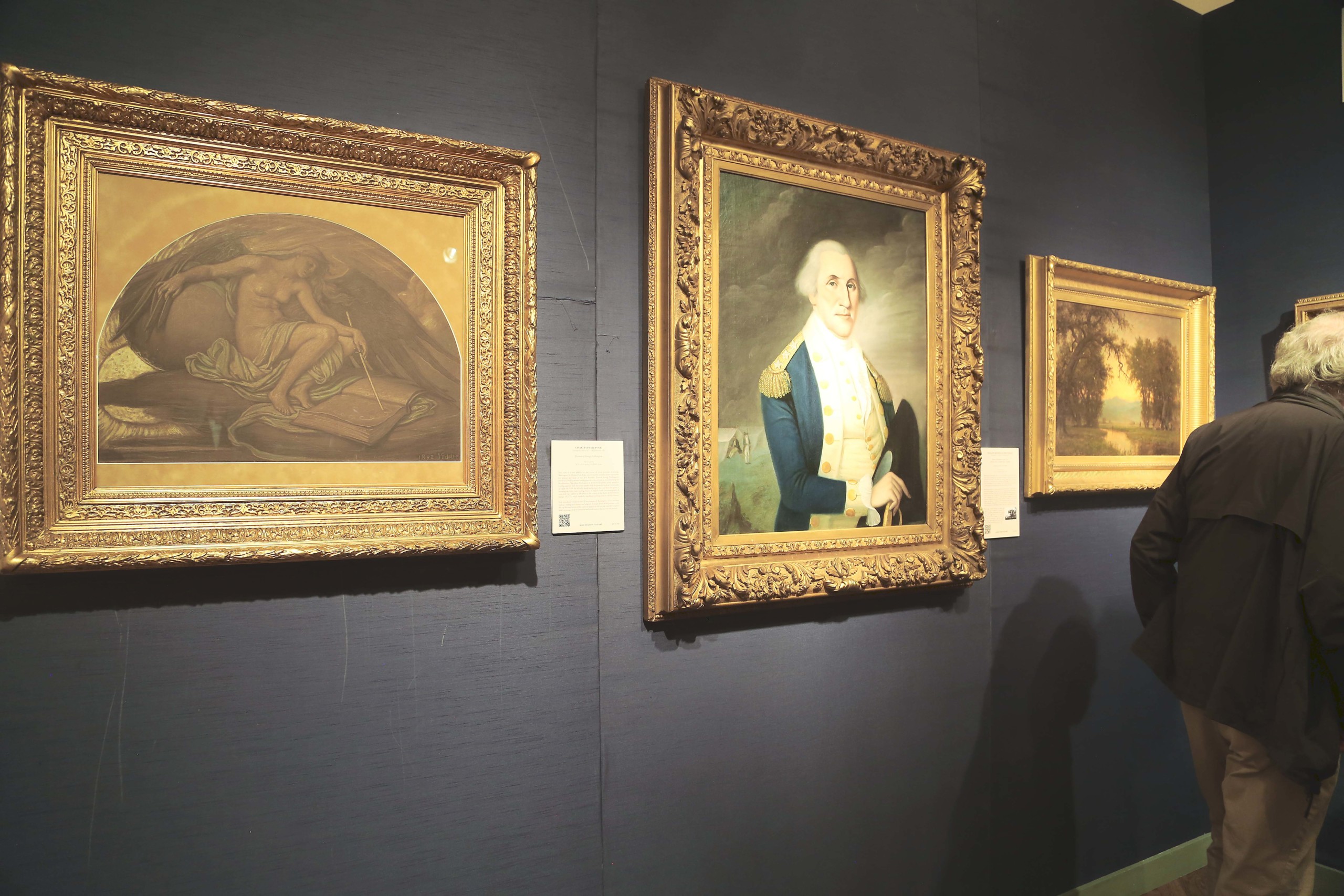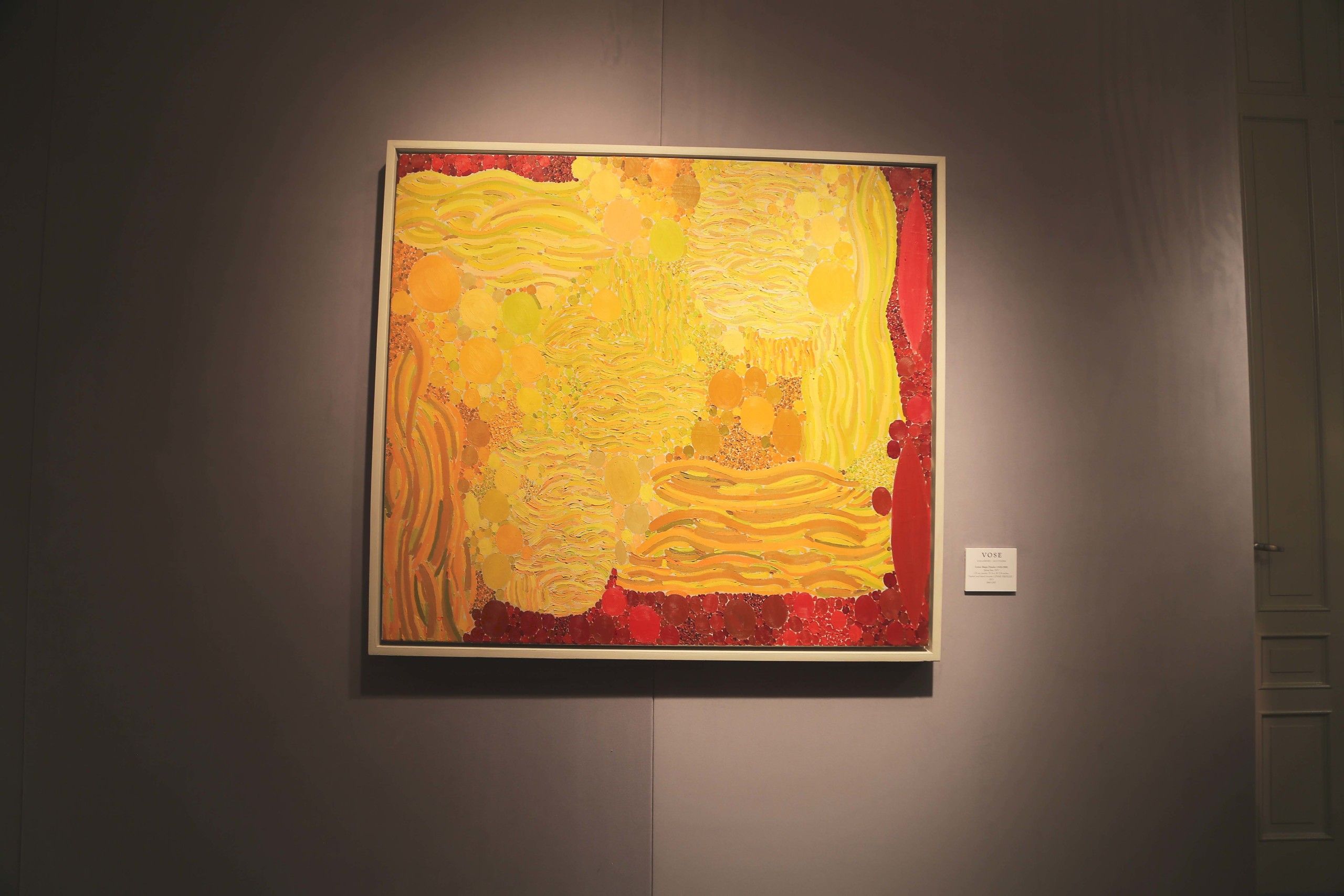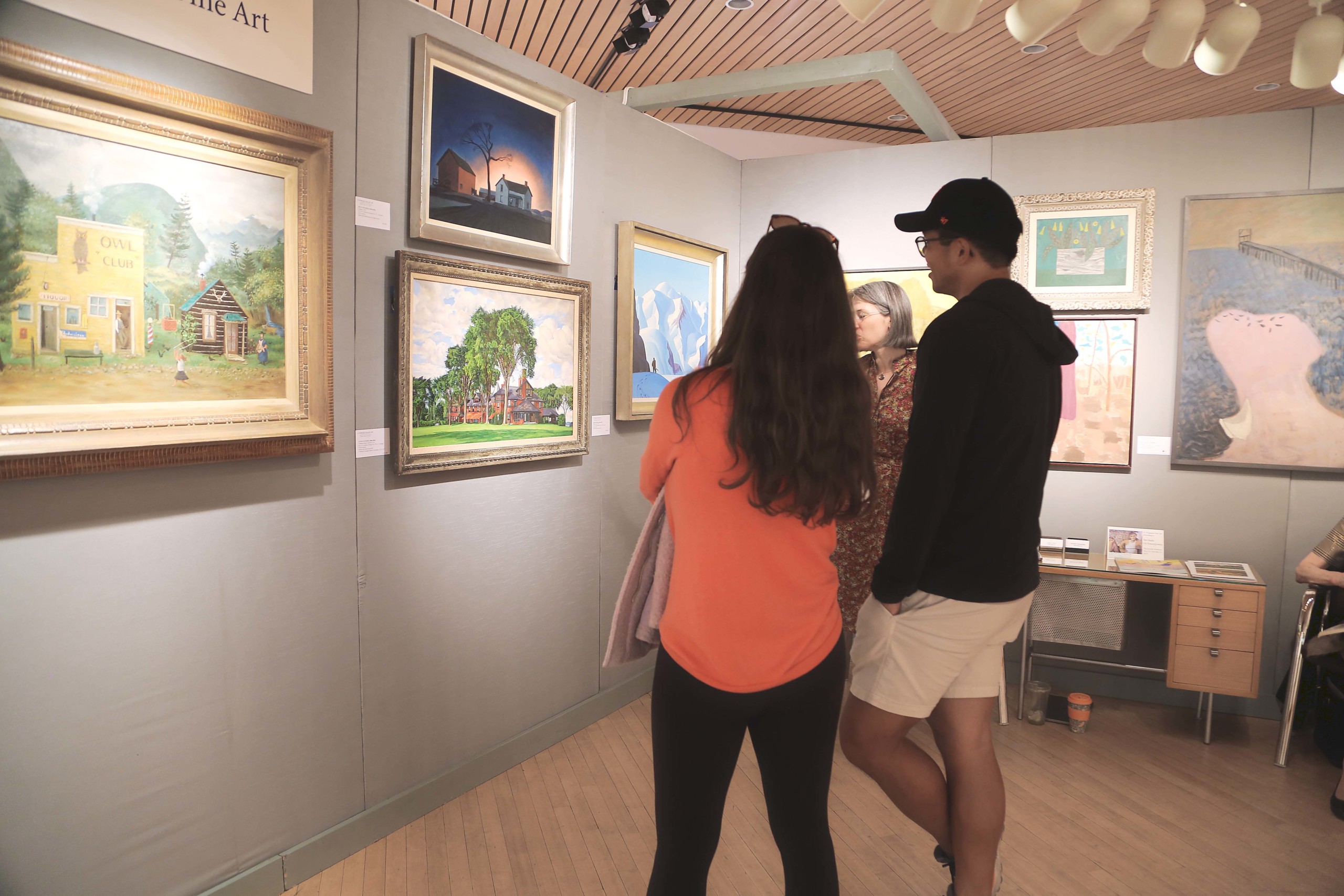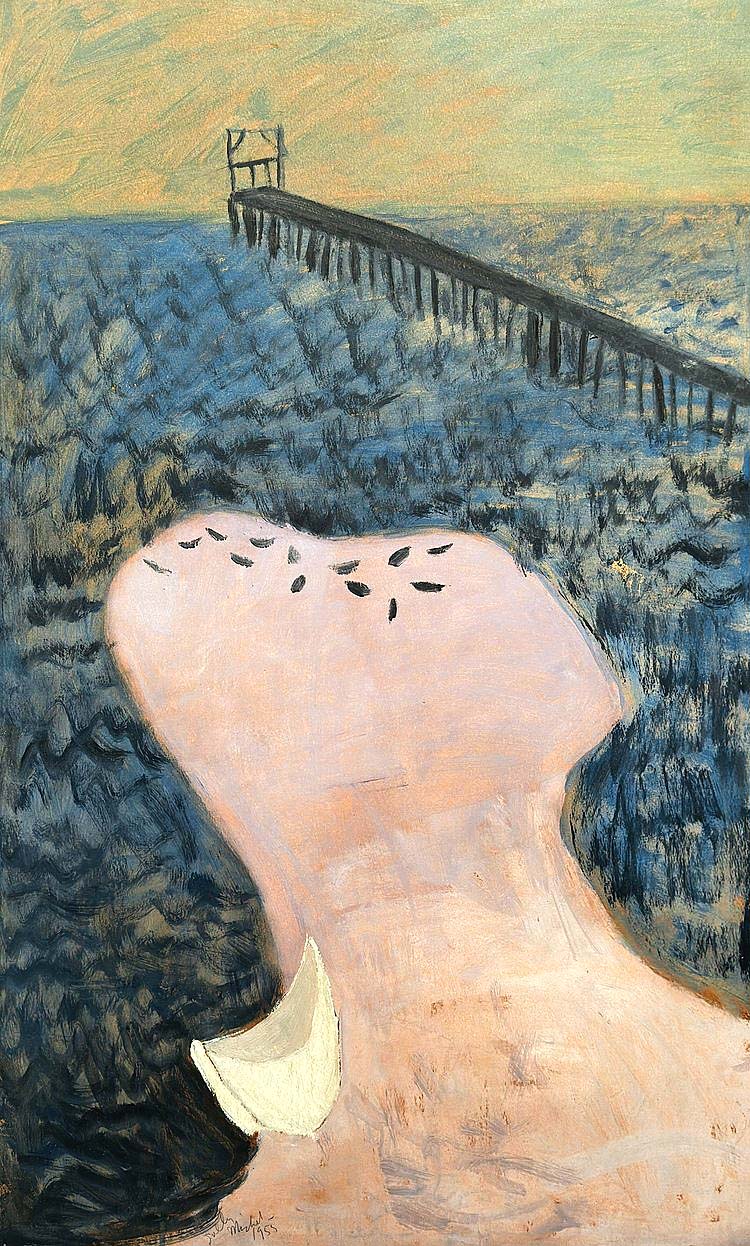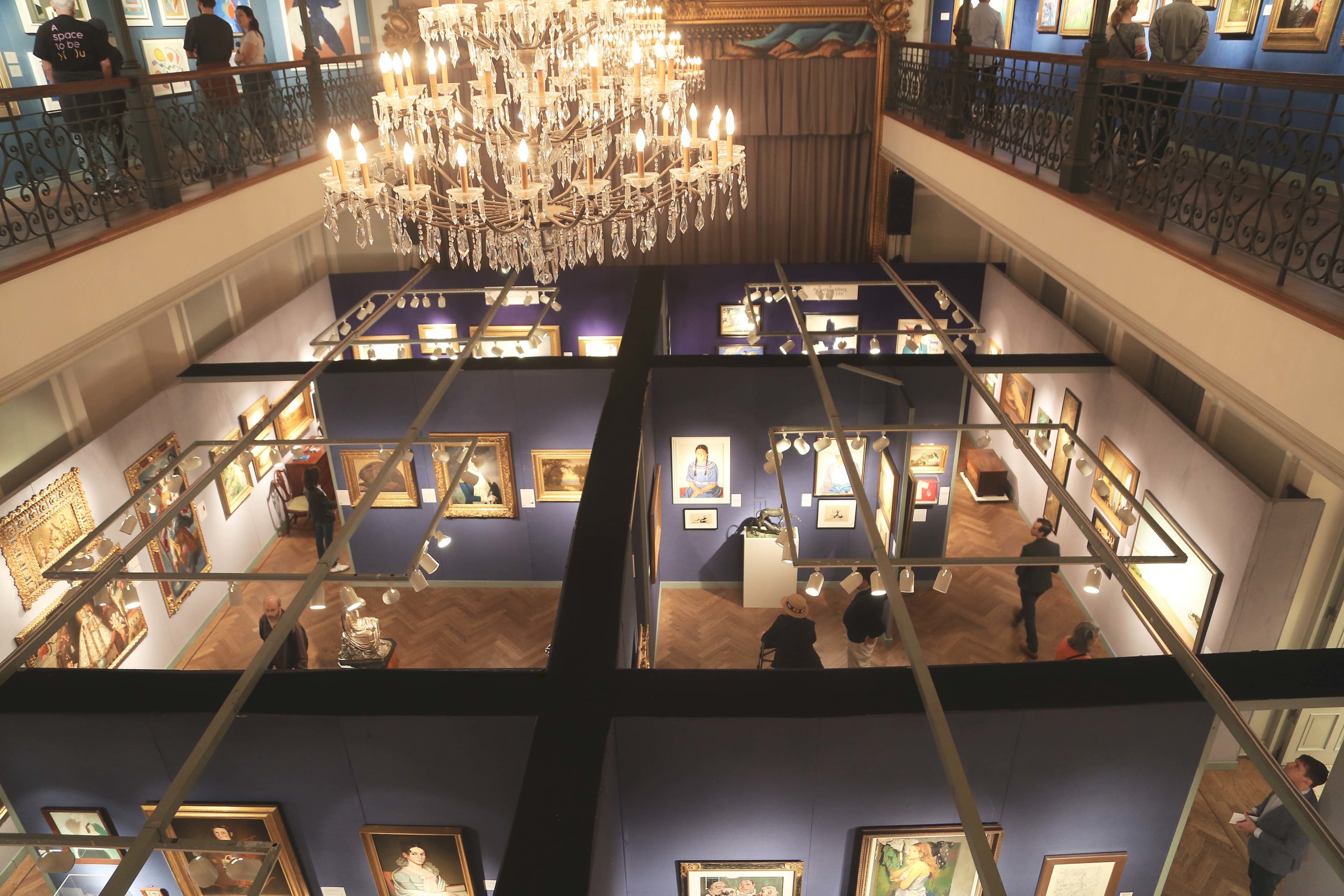
View from the fifth floor gallery spaces and catwalk, overlooking the Bohemian National Hall’s fourth floor.
Review & Onsite Photos by Madelia Hickman Ring
NEW YORK CITY — New York City area art connoisseurs do not suffer from lack of choice in the first two weeks of May. Between sales at auction houses large and small and the return of the annual global juggernaut fairs of Frieze and TEFAF, not to mention any of the many shows launched by individual galleries, one can be overwhelmed with the sheer volume, diversity and price points of what’s available for purchase. To cleanse one’s visual palette, or simply get a respite from the maddening crush, those who know go to the Bohemian National Hall (BNH), where fewer than two dozen dealers — all noted experts in their chosen field — bring an array of mediums that exclusively celebrate the history of American art: The American Art Fair (TAAF).
Open May 10-13 and now in its 18th year, the show saw more than 18,000 views of its Instagram page and welcomed record attendance to the Friday, May 9 preview party, with guests lingering until the evening ended. All the lectures — “Gertrude Abercrombie: The Whole World is a Mystery” by Sarah Humphreville (Colby College Museum of Art); “The Ever-Experimental Work of Emil Bistram” by Clair Mosier (Anschutz Collection); and independent curator and scholar Valerie Ann Leeds’ “The Enigmatic Expatriate: Julius LeBlanc Stewart, Artist of Belle Époque Paris and His American Legacy” — were reported to have had good attendance. Fair director Catherine Sweeney Singer reported, “We had to turn away 75 more who wanted to hear [Metropolitan Museum curator] Stephanie Herdrich on her exhibition, ‘Sargent and Paris.’”
“There were dozens of curators at the preview, and several returned on Monday and Tuesday; I know of three sales to one museum,” Singer recounted, underscoring the fair’s mandate of attracting quality visitors. “It got more and more crowded and we had the liveliest closing day in the fair’s history.”
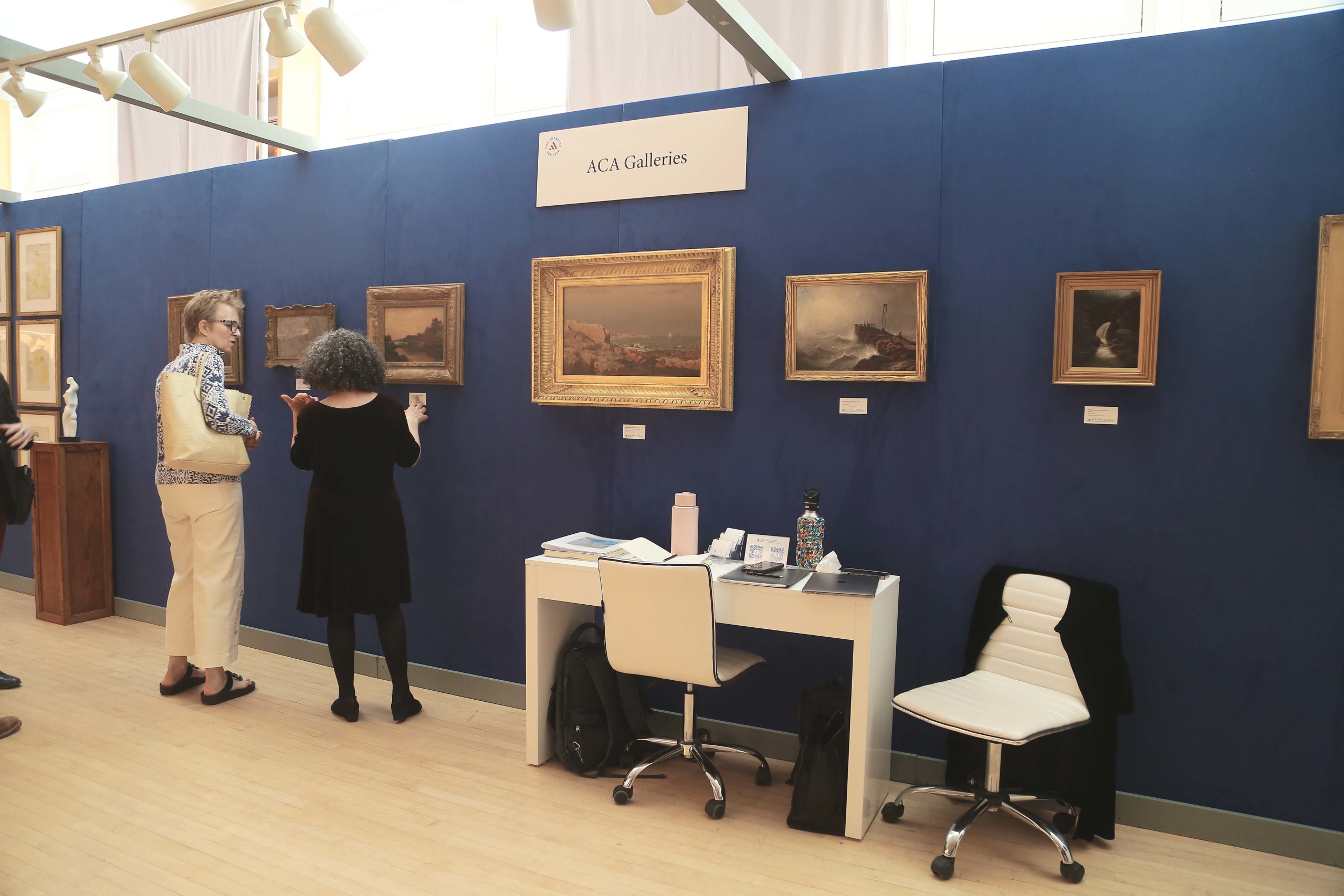
Nineteenth and early Twentieth Century pieces with ACA Galleries, New York City.
Hollis Taggart, ACA Galleries and Robert Simon Fine Art were all new exhibitors, while Vose Galleries was returning after a hiatus.
Rather than have all of the exhibitors’ booths on one level of a single vast space, the show takes over three floors at the BNH, allowing more careful consideration within different rooms. Stepping off the elevator on the third floor, visitors decide between going left to see Hawthorne Fine Art, ACA Galleries or Adelson Galleries, or right, where Schwarz Gallery, Hollis Taggart, D. Wigmore Fine Art and Graham Shay 1857 were set up.
Going left, Nineteenth and early Twentieth Century American art specialist Hawthorne Fine Art had portraits, landscapes and still-life paintings aplenty, including a group of paintings by Julie Hart Beers (1834-1913). Beers, a Pittsfield, Mass., native, was the younger sister of landscape painters James and William MacDougal Hart and one of the few female Hudson River School artists. The firm’s senior researcher, Megan Bongiovanni, noted that Beers had helped teach other women artists by taking them out into nature to paint en plein aire. She confirmed the group on offer had been found in the family and were making their “first time out.”
ACA Galleries — so named for the American Contemporary Art it focused on when it was founded in 1932 — was next to Hawthorne. In its nearly 100 years, the gallery has expanded its mandate to include Nineteenth Century as well as modern and contemporary American and European painting, sculpture and photography. Works were on offer by artists including Edward Mitchell Bannister (1828-1901), William Stanley Haseltine (1835-1900), Romare Bearden (1911-1988), Faith Ringgold (1930-2024) and Jacob Lawrence (1917-2000).
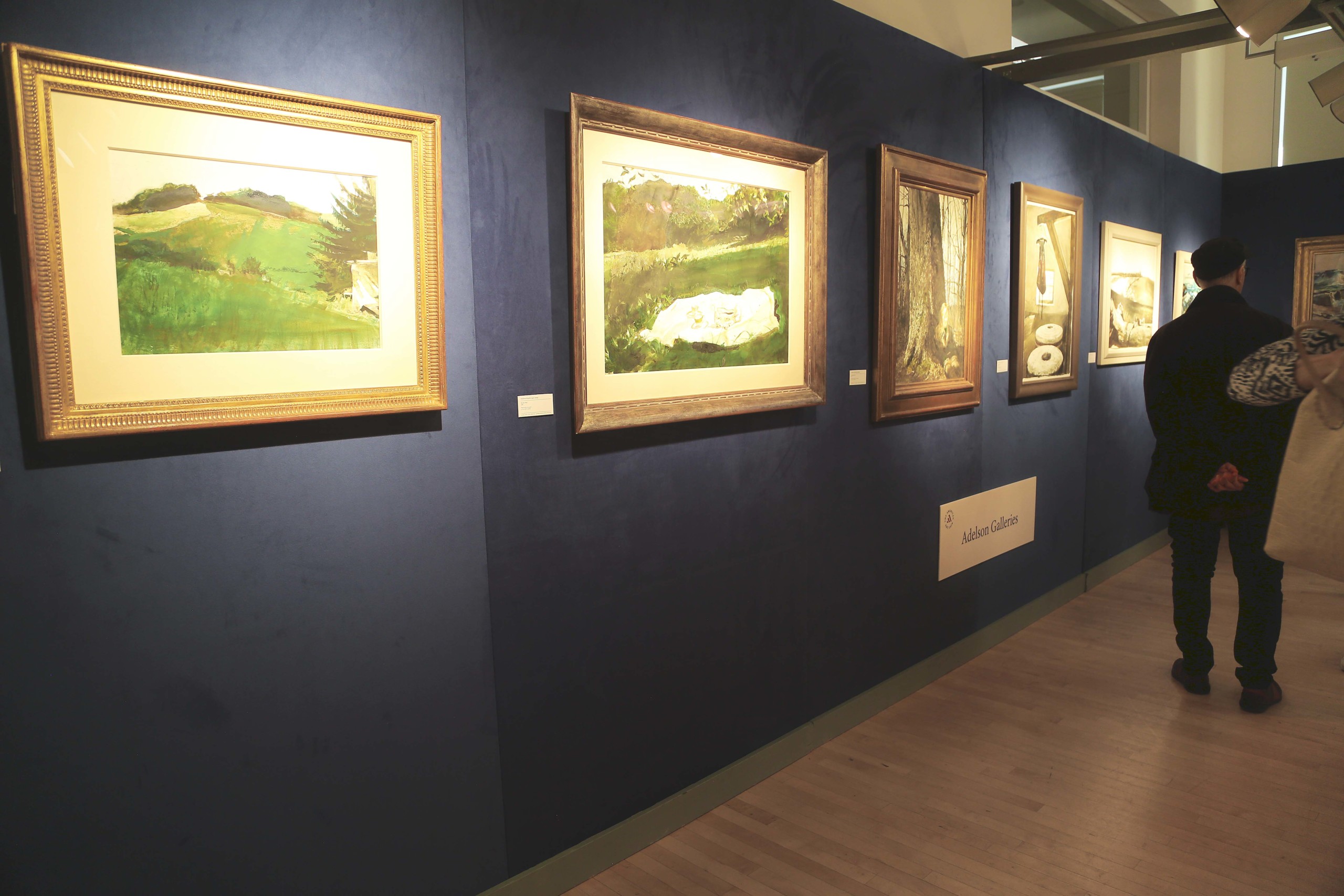
Adelson Galleries’ “Wall of Wyeths.” New York City & Palm Beach, Fla.
ACA’s neighbors were Adelson Galleries, which was founded in 1965 in Boston. In New York City since 1973, and now also in Palm Beach, the gallery is a family affair, with offices in the Fuller Building in midtown Manhattan and on Worth Avenue, in the heart of Palm Beach. Their L-shaped booth featured one wall of works by Andrew Wyeth while opposing walls paired three painted leather works by Winfred Rembert (1945-2012) across from a series of 13 works by Mary Cassatt (1844-1926), titled “The Bath.”
Across the elevator lobby, Philadelphia gallerist Robert Schwarz had sold on opening night a set of 13 framed whimsical drawings by George Washington Sully (1816-1890), the nephew of artist Thomas Sully. Schwarz said he had enough interest in the group that he’d sold to another buyer some more that he had left behind in Philadelphia. Some of Schwarz’s recent acquisitions included a portrait of the Honorable John A Thornton by Thomas Eakins (1844-1916) and a painting, “The USS Kearsarge Sinking the Alabama” by Xanthus Russell Smith (1839-1929).
Schwarz’s neighbor was debuting exhibitor Hollis Taggart. The Chelsea, New York City-based gallery has shifted its focus from Hudson River School to modernism and post-war works; associate Severin Delfs pointed out several important pieces: two mixed media works by Teruko Yokoi (1924-2020), an untitled gouache on paper by Sam Francis (1923-1994) and an “iconic” pastel on paper by Joan Mitchell (1925-1992).
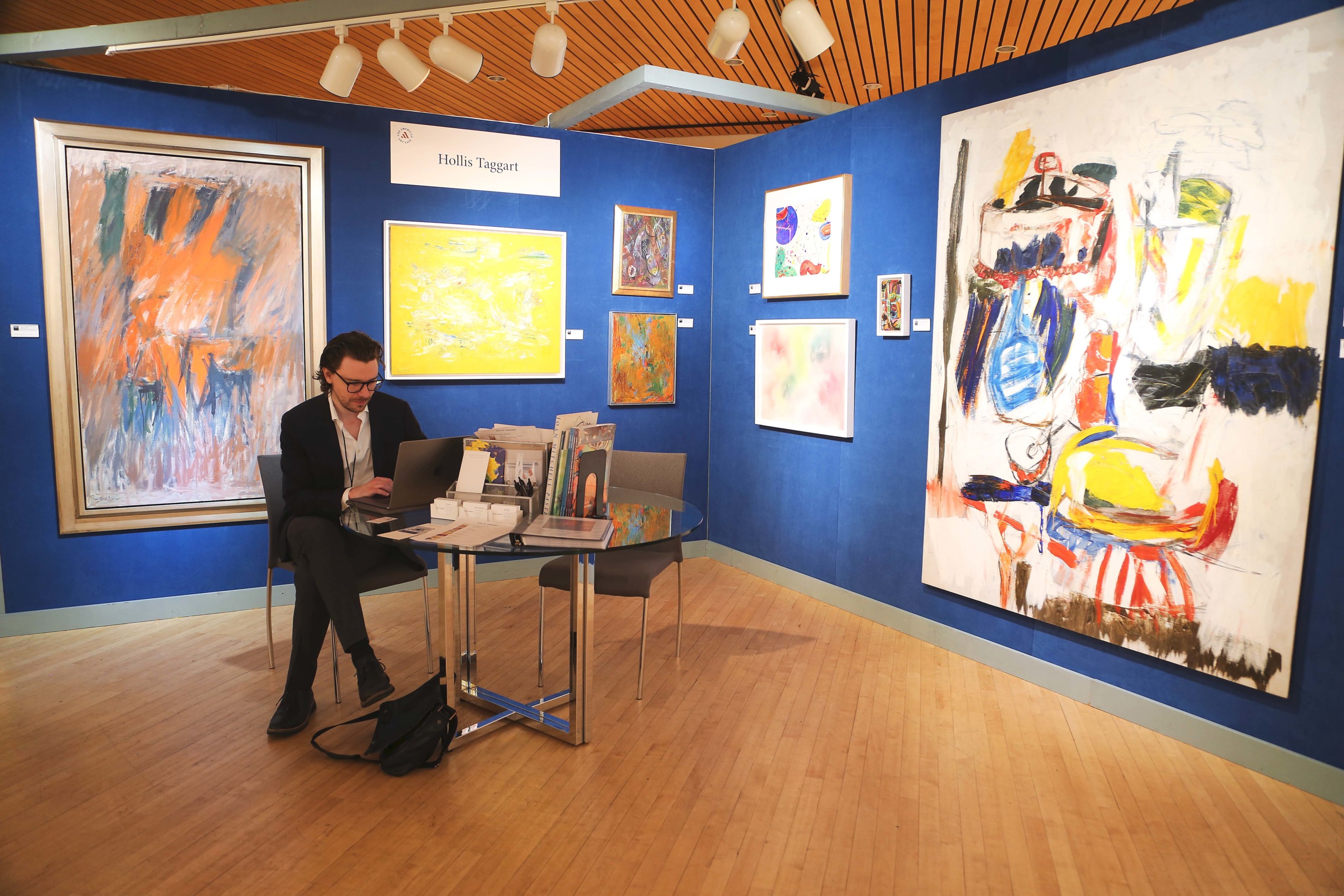
Color was a through-line with Hollis Taggart. New York City.
An exceptional work in Tennessee pink marble by Paul Manship (1885-1966) anchored the booth of Graham Shay 1857. In its first public showing since 1929, when it was exhibited at San Francisco’s Palace of the Legion of Honor, “Europa and the Bull” came to Cameron Shay from a family that’s owned it for three generations. Shay also had the artist’s bronze model for the larger marble sculpture; he found a buyer for the model during the fair. Paintings on offer included Albert Bierstadt’s oil on paper stock composition titled “Mount Rosalie, Colorado” (1863), which is believed to be a sketch for his “A Storm in the Rocky Mountains, Mount Rosalie” at the Brooklyn Museum, and “Channel Bell,” in watercolor on paper, by Andrew Wyeth (1917-2009).
Rounding out the small gallery was D. Wigmore Fine Art, showing a range of artists including Jean Xceron (1890-1967), Irene Rice Pereira (1902-1971), Ralston Crawford (1906-1978), Emil Bisttram (1895-1976), Esphyr Slobodkna (1908-2002), Byron Browne (1907-1961), Charles Biederman (1906-2004), Doris Lee (1904-1983), Luigi Lucioni (1900-1988) and Sally Michel (1902-2003). Visitors responded to her selection and pieces by Xceron, Lucioni and Michel were sold.
Eight of the fair’s 17 dealers were on the fourth floor, with the booth of Hirschl & Adler being front and center opposite the elevator lobby. Works spanning both the Nineteenth and Twentieth Centuries were on offer, including two portraits by Winold Reiss (1886-1953), an artist the New York City gallerist has recently showed in an exhibition at their Fuller Building gallery. One of the sales the gallery transacted was “Bowling Night,” a circa 1940-42 oil on board by Federico Castellón.

Nineteenth and early Twentieth Century portraits captivated show-goers. Hirschl & Adler Galleries, New York City.
Hirschl & Adler’s next door neighbor — Bernard Goldberg Fine Arts — also had work by Reiss but their offerings included three-dimensional examples, notably, a pair of carved oak side chairs that had been at the Alamac Hotel and dated to 1923. Director Ken Sims told Antiques and The Arts Weekly they had brought “more decorative arts than usual” to introduce it to fair-goers. Other decorative arts included a stenciled frieze Louis Sullivan (1856-1924) made for the Chicago Stock Exchange building and a carved and painted chestnut “Pasadena Narcissus” chest by Ernest Batchelder (1875-1957). “Columbus Circle,” a gouache on paper by Adolph Kronengold (1900-1986), found a new home during the fair.
Questroyal had an exceptionally good opening night, with a handful of sales, including “Summer Landscape with Farm Buildings” by Richard E. Miller (1875-1943), “Arctic Seascape” by William Bradford (1823-1892), and Edmund C. Tarbell’s “Girl in the Woods.” Before the show closed, “Giudecca Canal, Venice” by John Leslie Breck (1860-1899) and “High Bridge” by Hayley Lever (1876-1958) were also sold.
Spanish Viceregal paintings, and works from the Peruvian Cuzco School, were a significant portion of Robert Simon’s elaborate booth. A pair of oil on canvas paintings by Andrés de Islas (Mexican, circa 1730-circa 1783) were part of a once-larger set of 14 or 16 paintings that showed intermixed family groups that were part of the multi-ethnic Viceroyalty society. Titled “De Español y Castiza, Española” and “De Español y Negra, Mulata,” the compositions were numbered “3” and “4,” indicating they were early in the series, and showed the progeny of Spaniards intermarried with a castiza (a woman of mixed Spanish and Indigenous heritage) and an African woman. One of his early sales was that of a portrait of General George Washington by Charles Peale Polk, to an institution. Another piece that traded hands was Anne Whitney’s (1821-1915) bronze “Roma.”
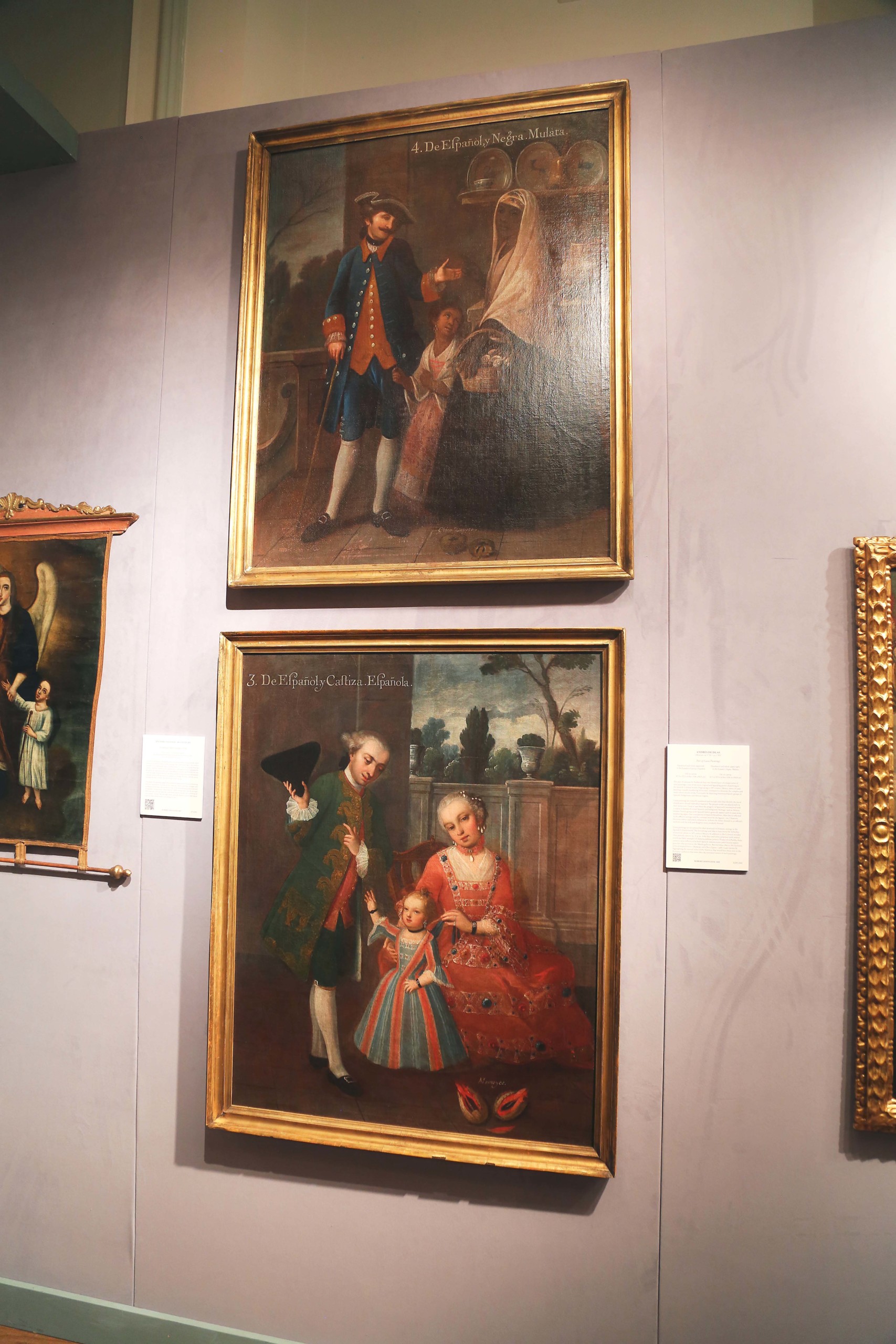
Two Castas paintings by Andrés de Islas. Robert Simon Fine Art, New York City.
American folk art dealer David A. Schorsch-Eileen M Smiles, from Woodbury, Conn., brought several Shaker objects including an Enfield, N.H., sewing desk, chrome-yellow washed oval fingered box, probably from Mount Lebanon, N.Y., a series of black and white portraits of Shaker sites by Noel Vincentini (1906-1963) and a ladderback chair. Paintings on hand were by artists such as Asahel Powers (1813-1843), Zedekiah Belknap (1781-1858), Rush Henshaw Bascom (1772-1848) and Isaac Nutman (1801-1872).
A wonderful sculptural rooster floor lamp by William Hunt Diederich (1884-1953) was a talking point for Debra Force. Made in 1923, the floor lamp is one of perhaps just three or four examples to feature the rooster motif, among other animal motifs the artist favored. It came to Force with provenance to two Massachusetts collections as well as one in Pennsylvania.
Vose Galleries was returning to TAAF after a hiatus with a gorgeous selection of both Nineteenth and Twentieth Century paintings. Among noteworthy pieces were “A Day at the Beach, Eastern Point, Gloucester” by Theodore Wendel (1857-1932), “Windy Day (Two Children)” by Martha Walter (1875-1976), “Down the Spanish Stairs, Rome” by Frederick Childe Hassam (1859-1935) and “San Remo, Italy” by Jane Peterson (1876-1965).
Before we left the fourth floor, we perused the offerings of Forum Gallery. Works by Stuart Davis (1892-1964), Elaine de Kooning (1918-1989), Philip Evergood (1901-1973), Chaim Gross (1902-1991), Jack Levine (1915-2010), Bernard Perlin (1918-2014), Winfred Rembert (1945-2021), Hugo Robus (1885-1964), Ben Shahn (1898-1969), Raphael Soyer (1899-1987) and Max Weber (1881-1961) were in plentiful supply.
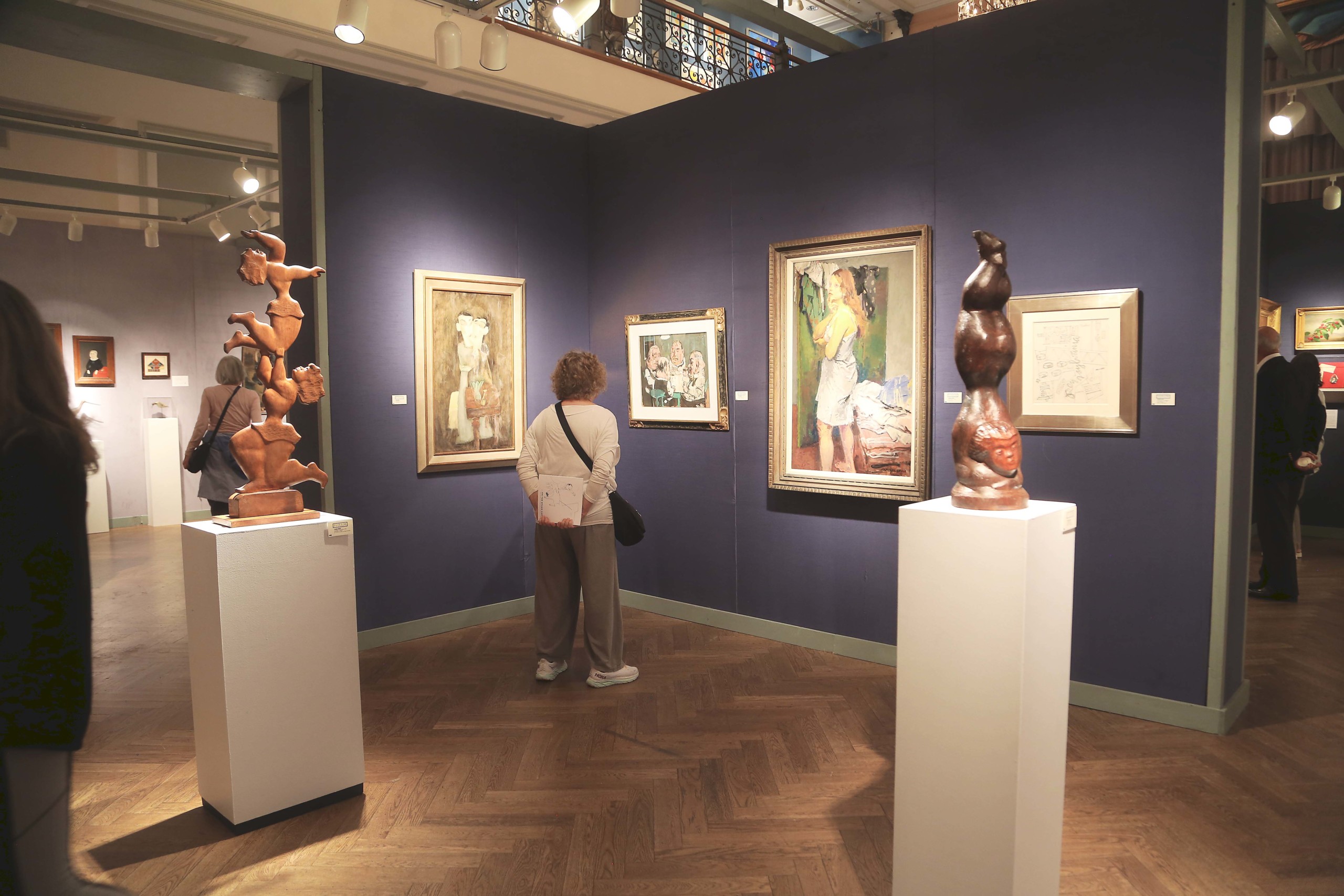
Forum Gallery, New York City.
Situated on the top floor, Avery Galleries and Thomas Colville Fine Art had a lofty view overlooking the exhibitors on the fourth floor. Louis Agassiz Fuertes’ (1874-1927) “Turquoise Browed Motmot,” a watercolor on paper that had provenance to a West Falmouth, Mass., family, found a new home on opening night, while a watercolor and pastel on paper by John Henry Twachtman (1853-1902) titled “Irises” sold before the end of the fair.
One wall of Thomas Colville’s booth was dedicated to John Whorf’s (1903-1959) watercolor landscapes; one of them was marked “sold” before the fair closed.
In 2026, the 19th edition of The American Art Fair will return to the Bohemian National Hall May 9-12. For information, www.theamericanartfair.com.
